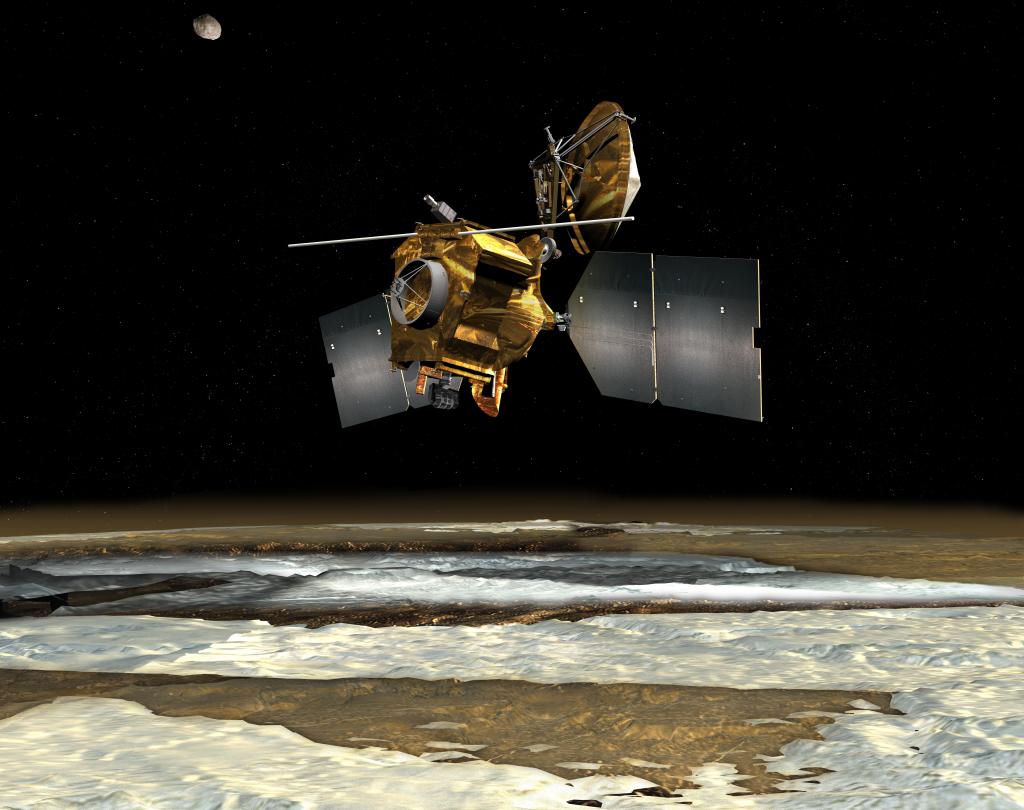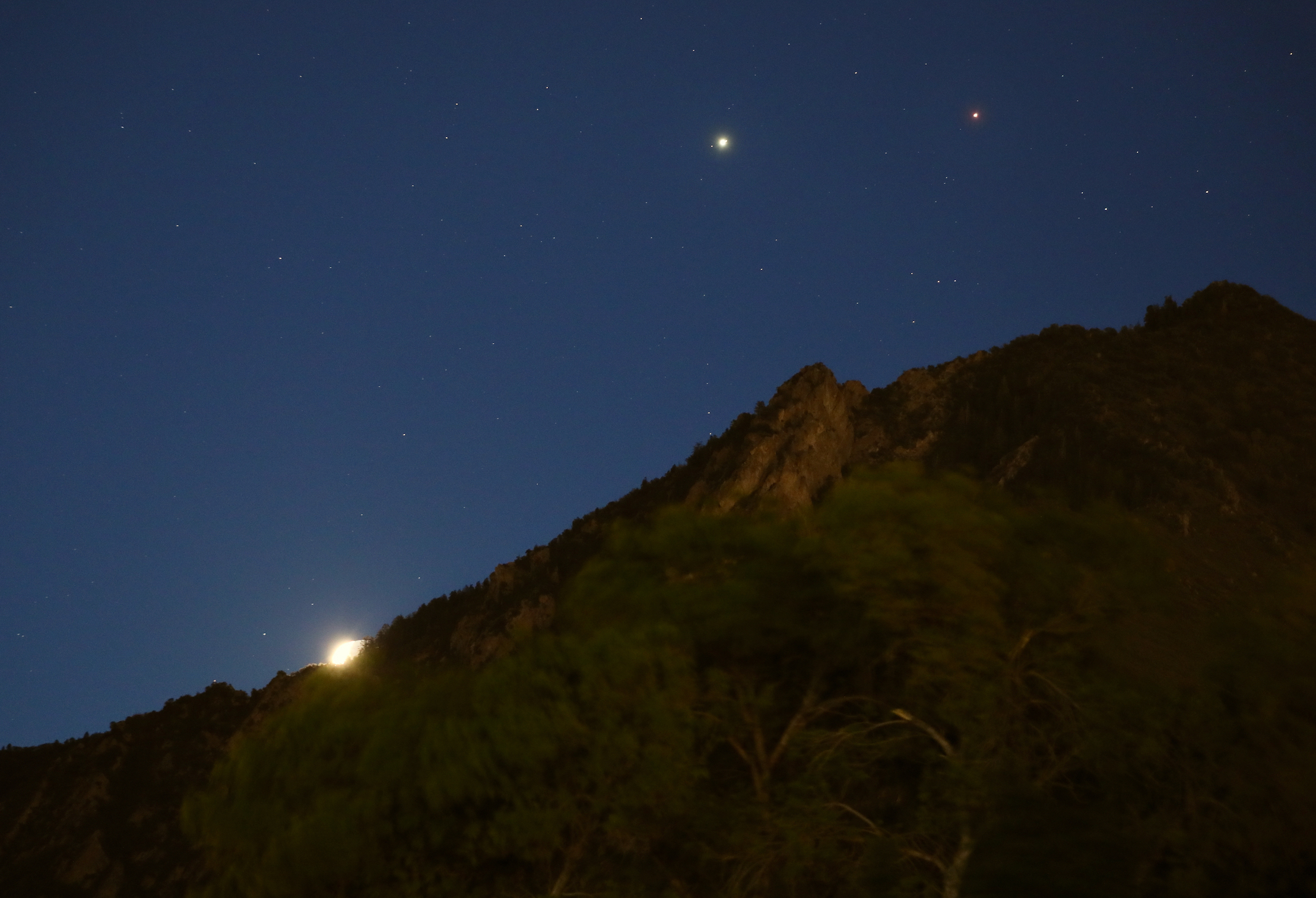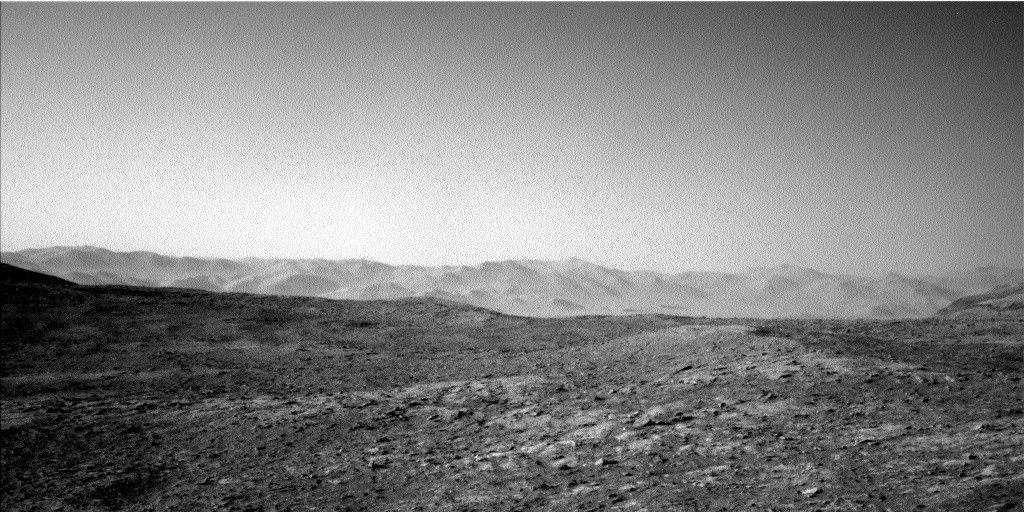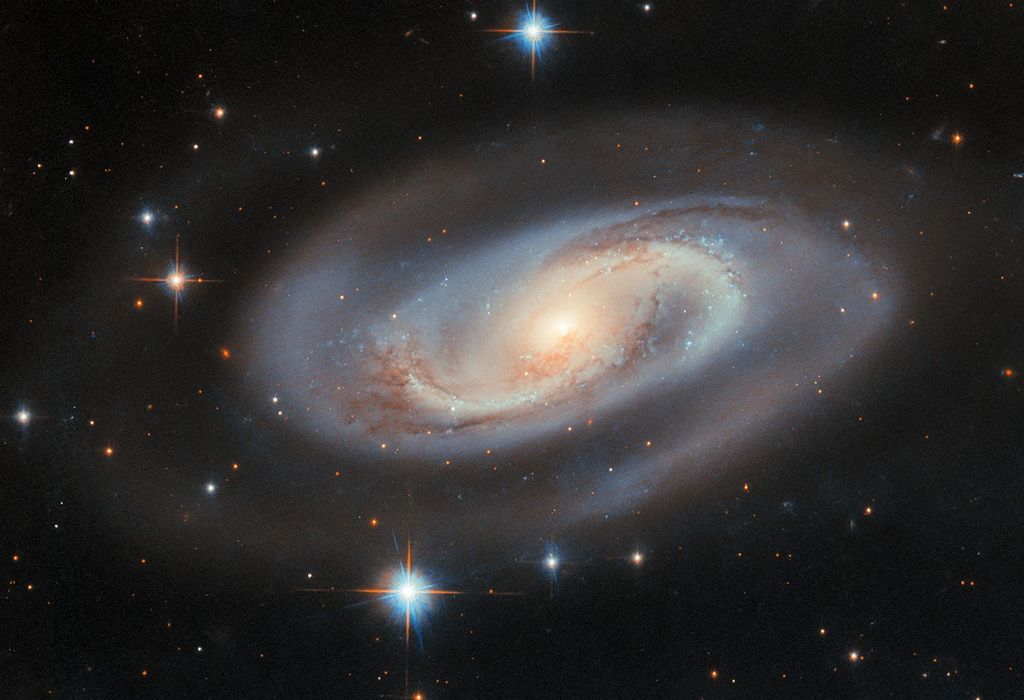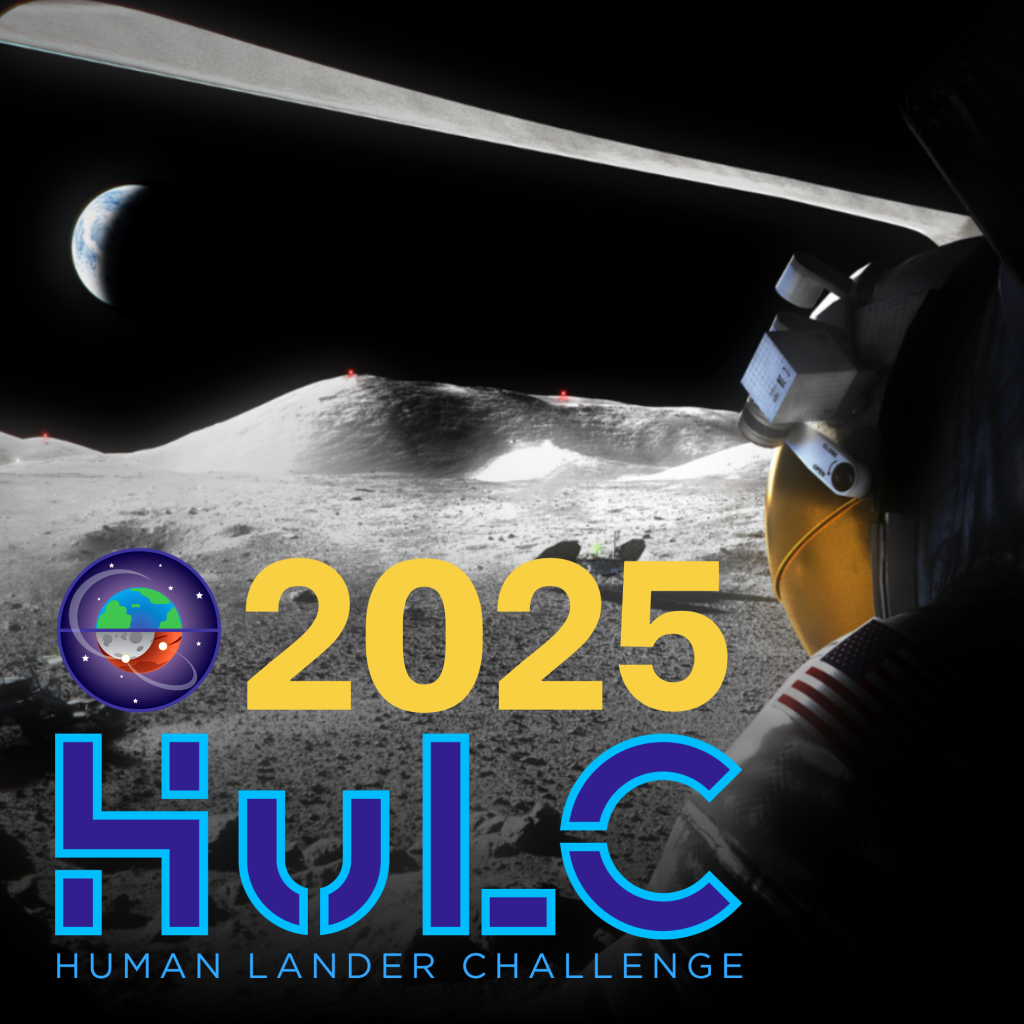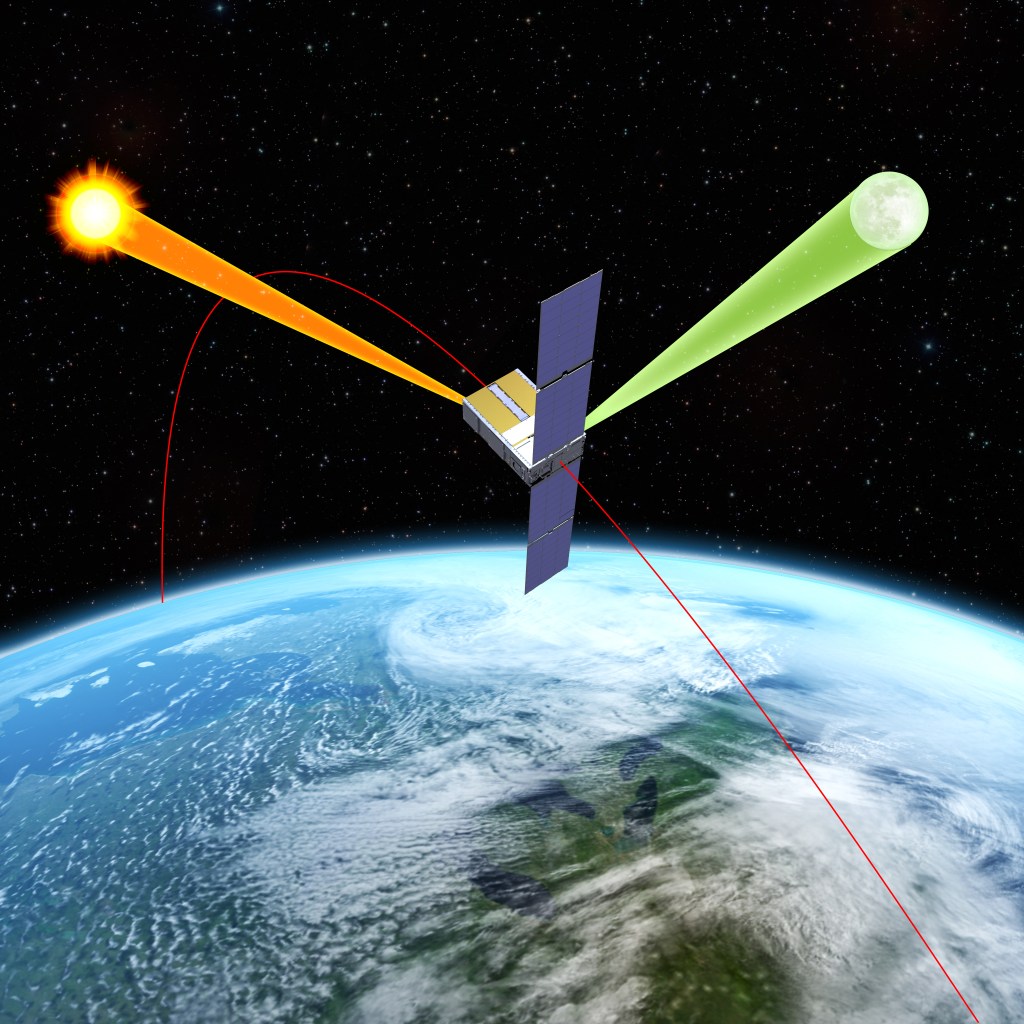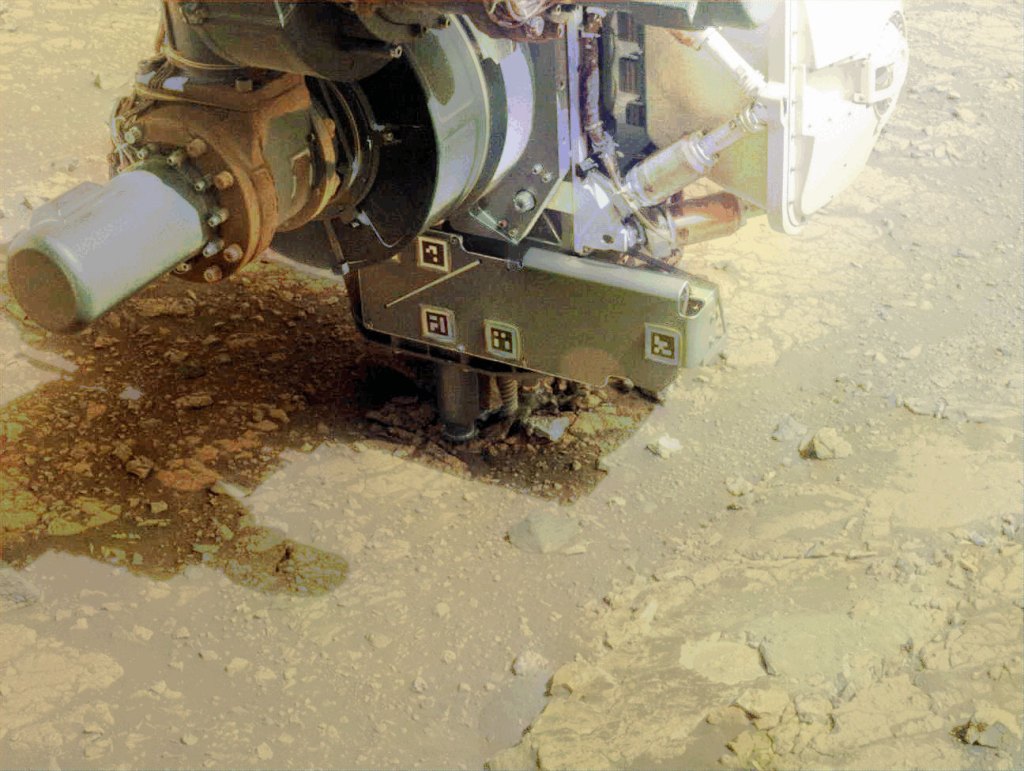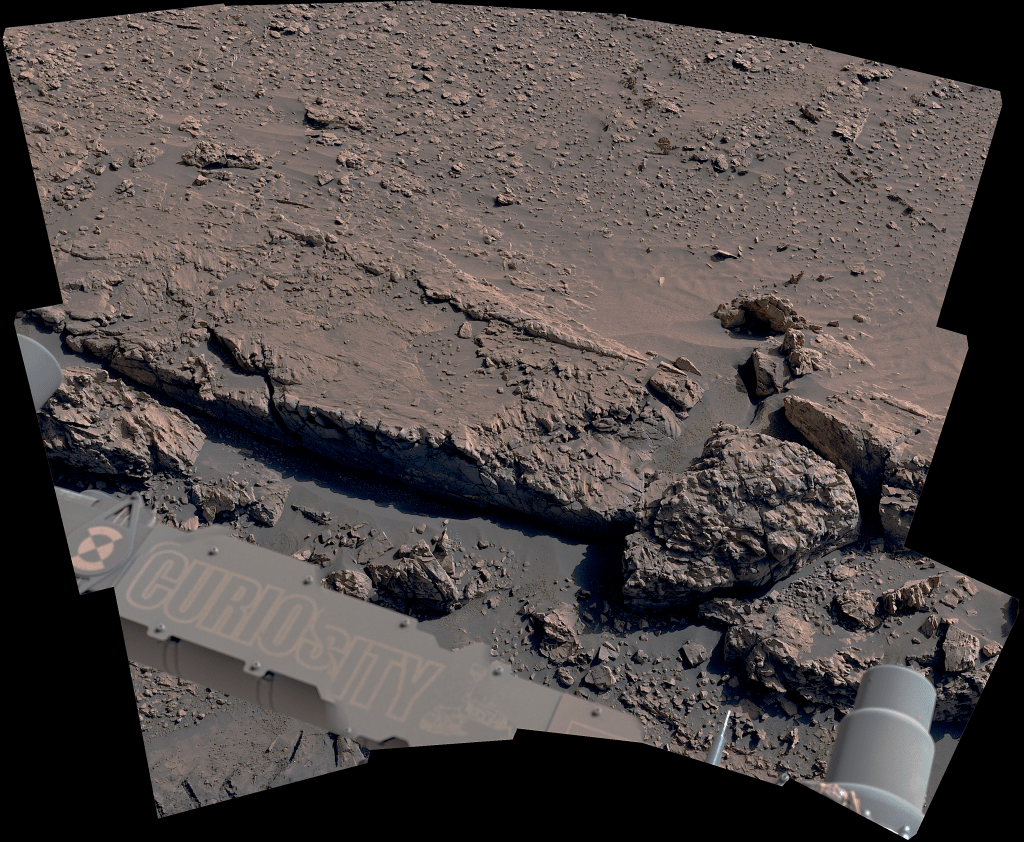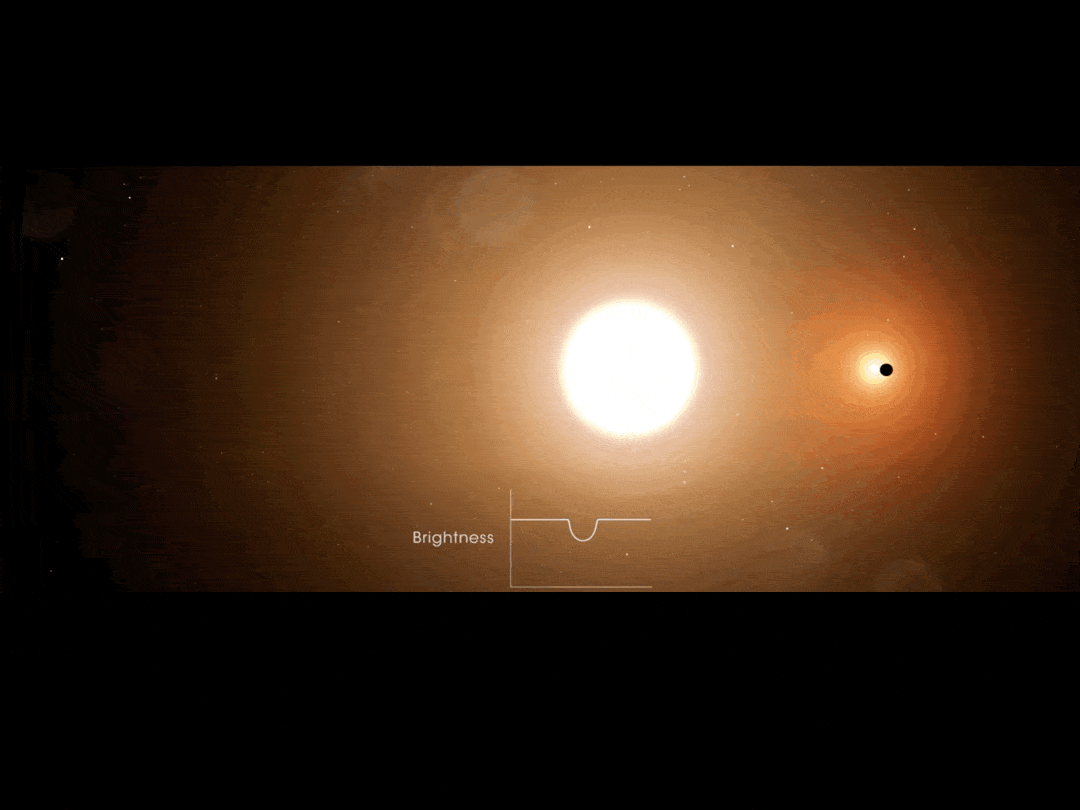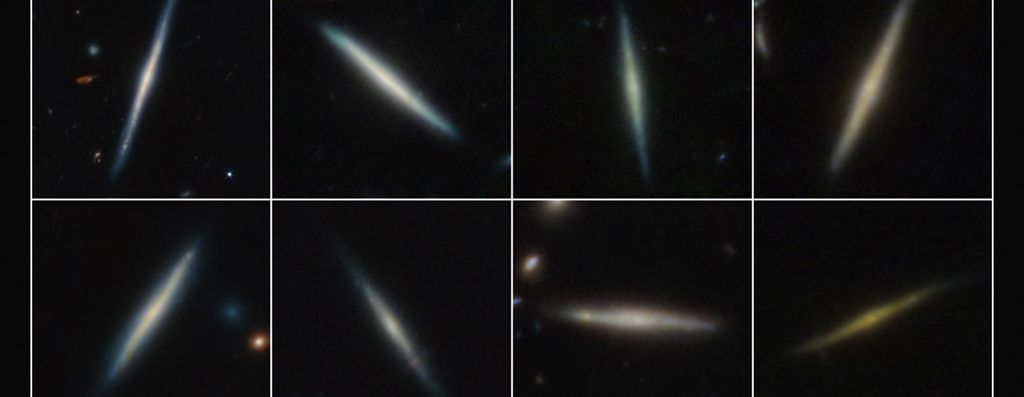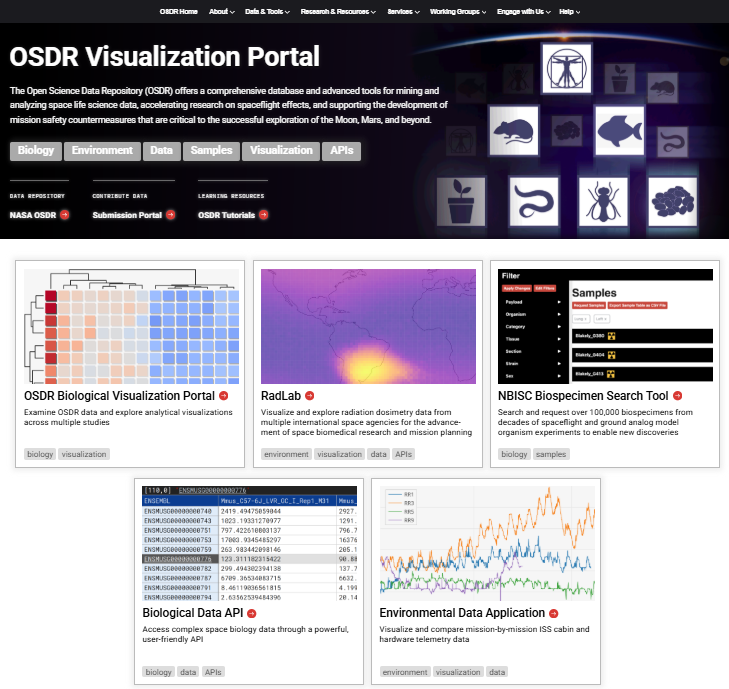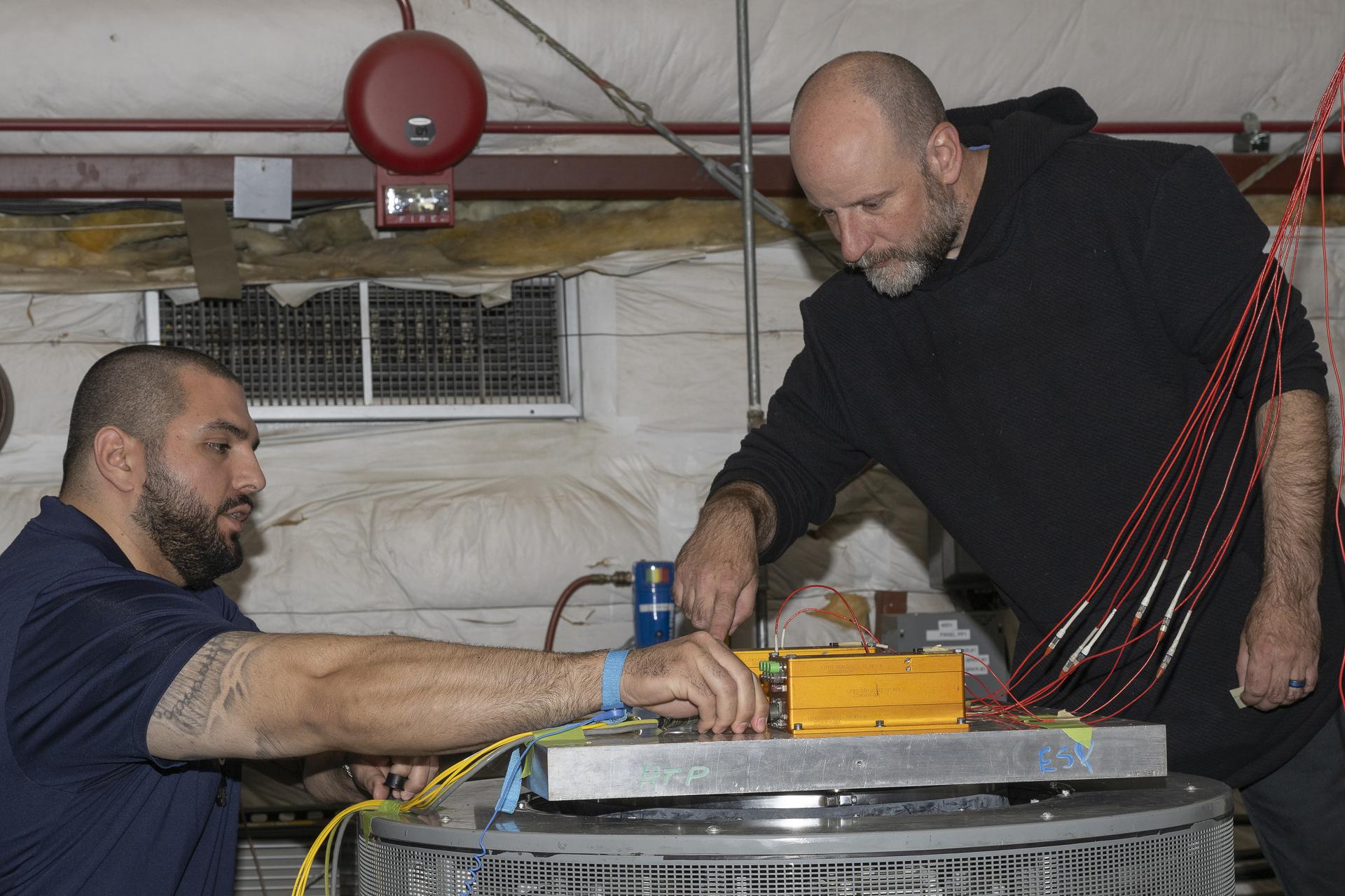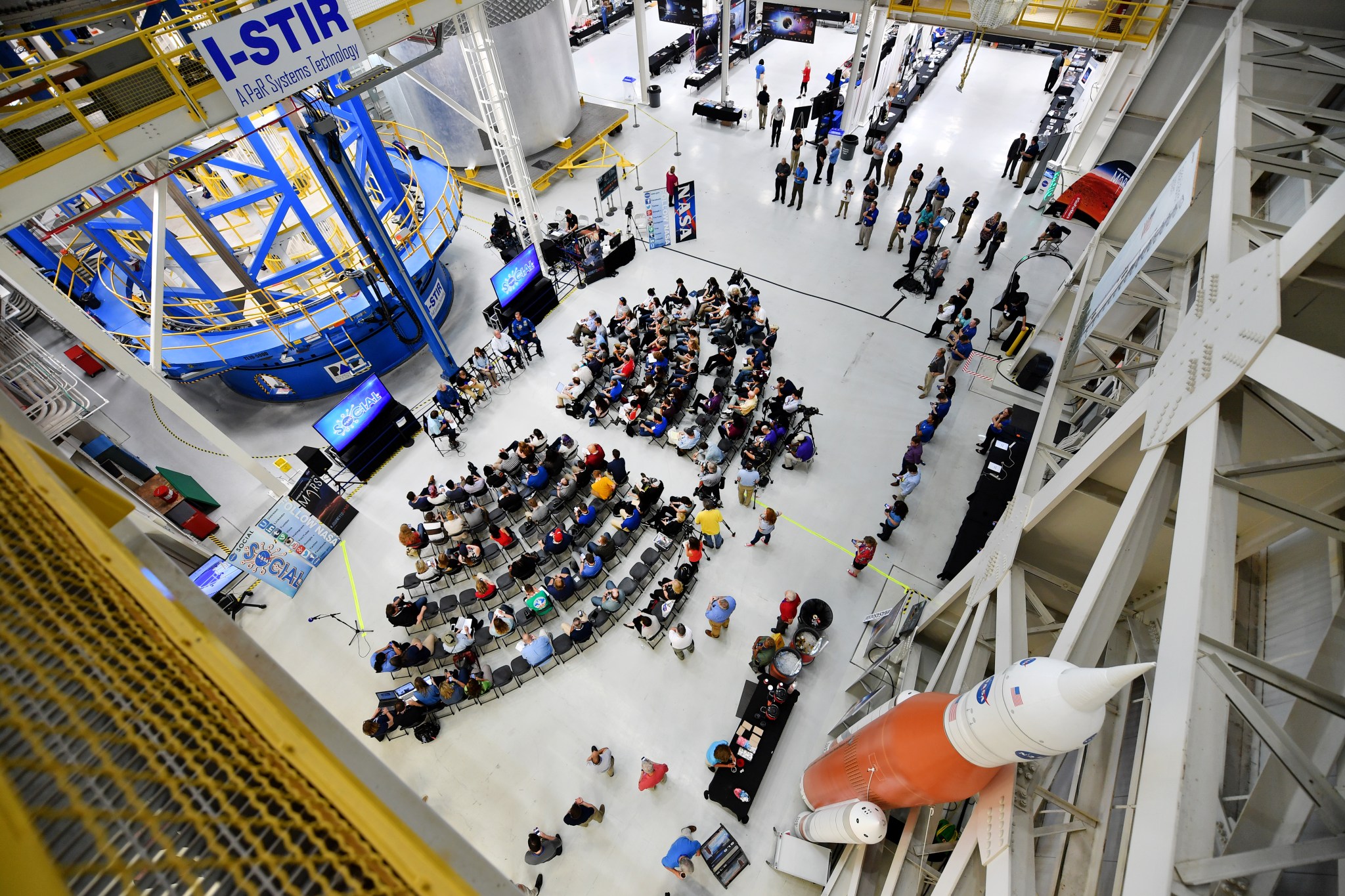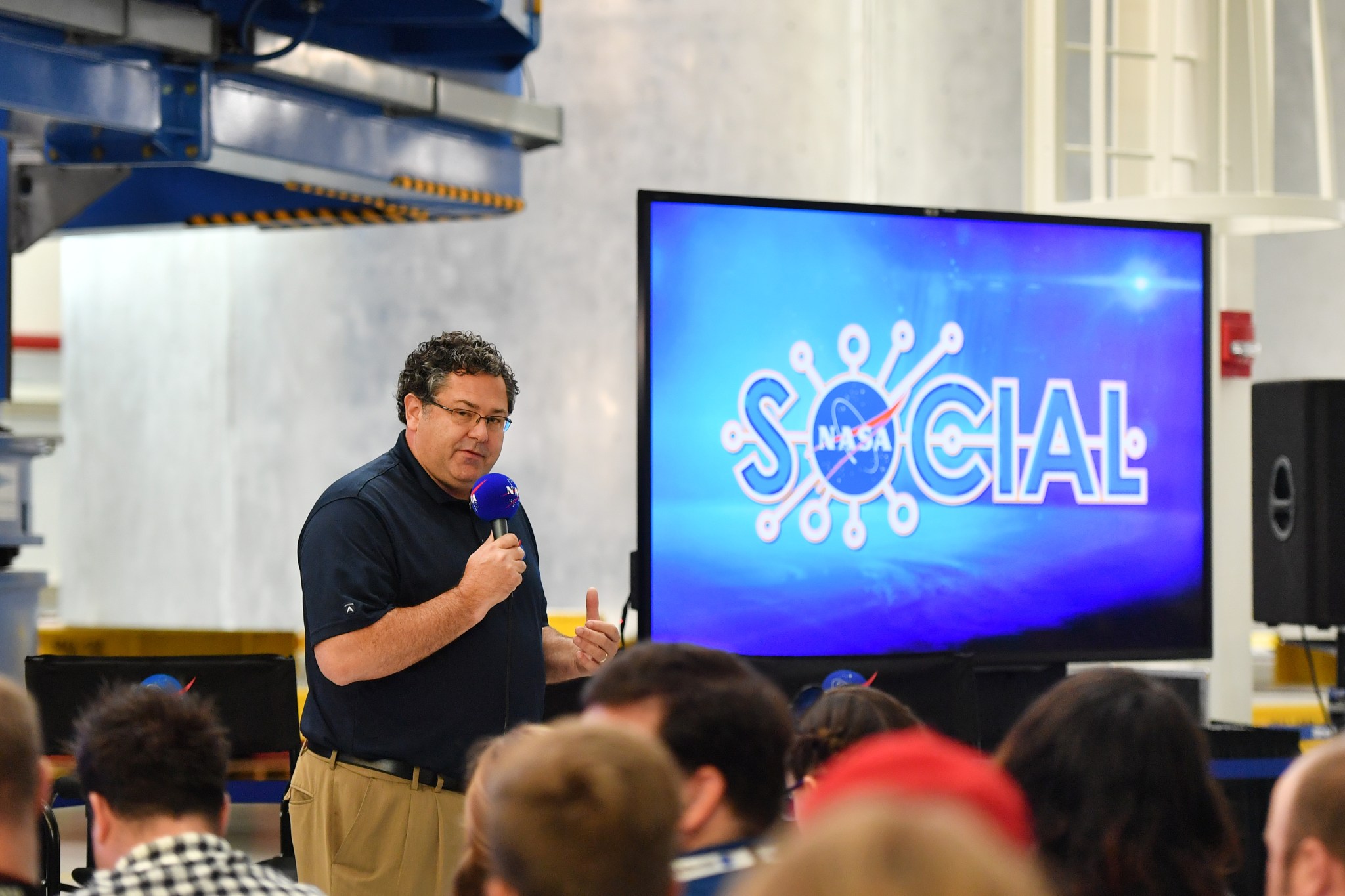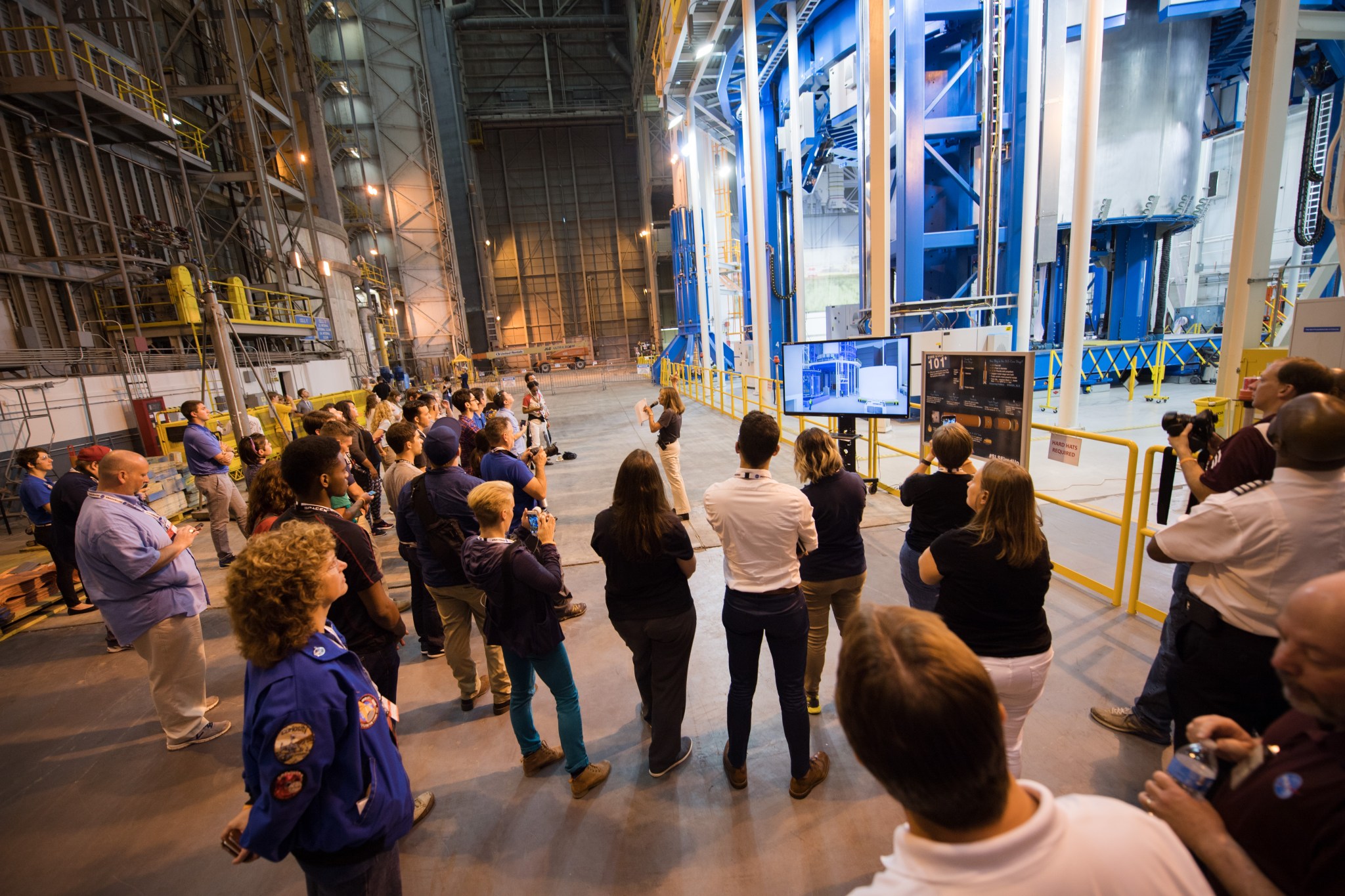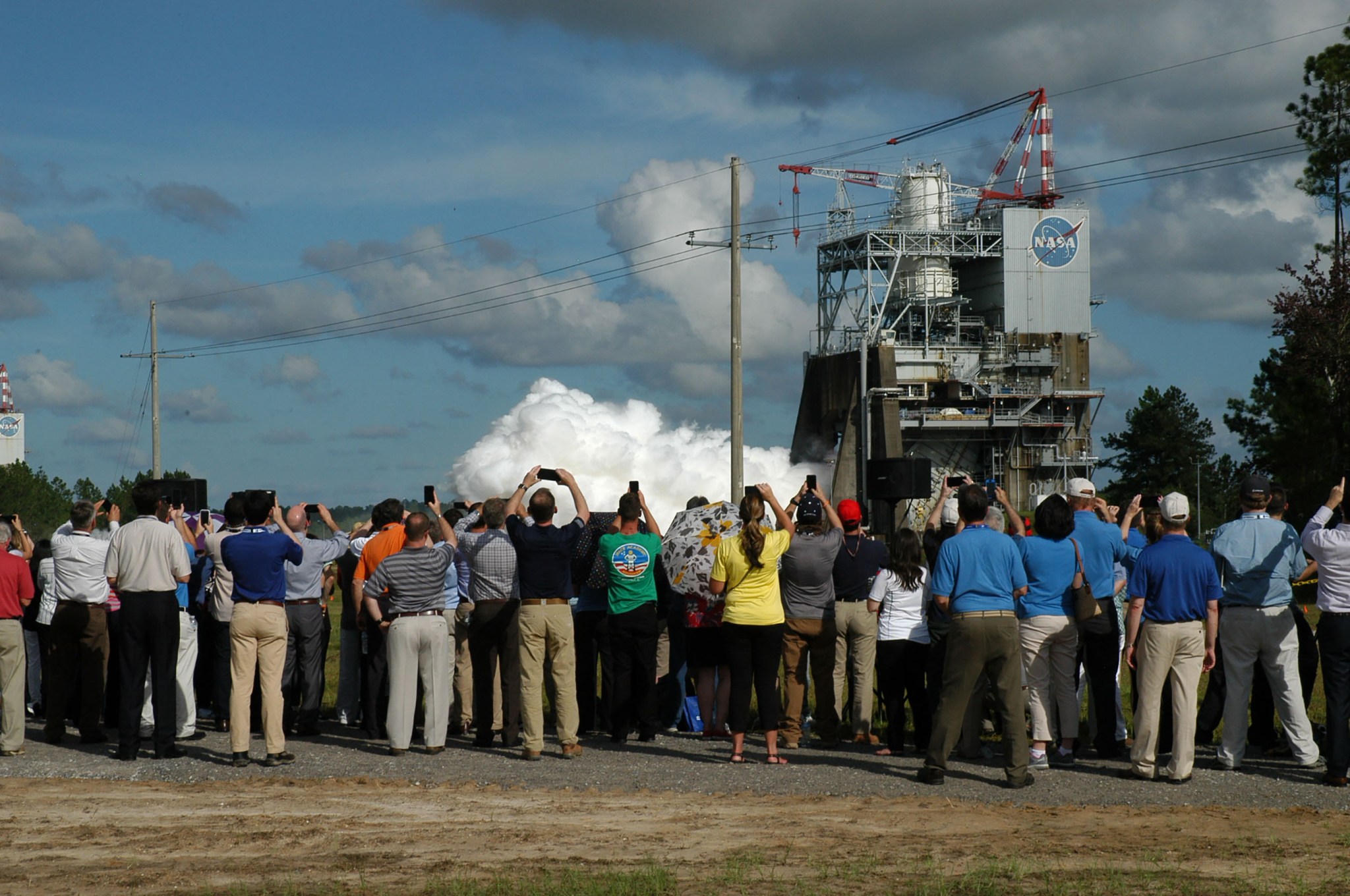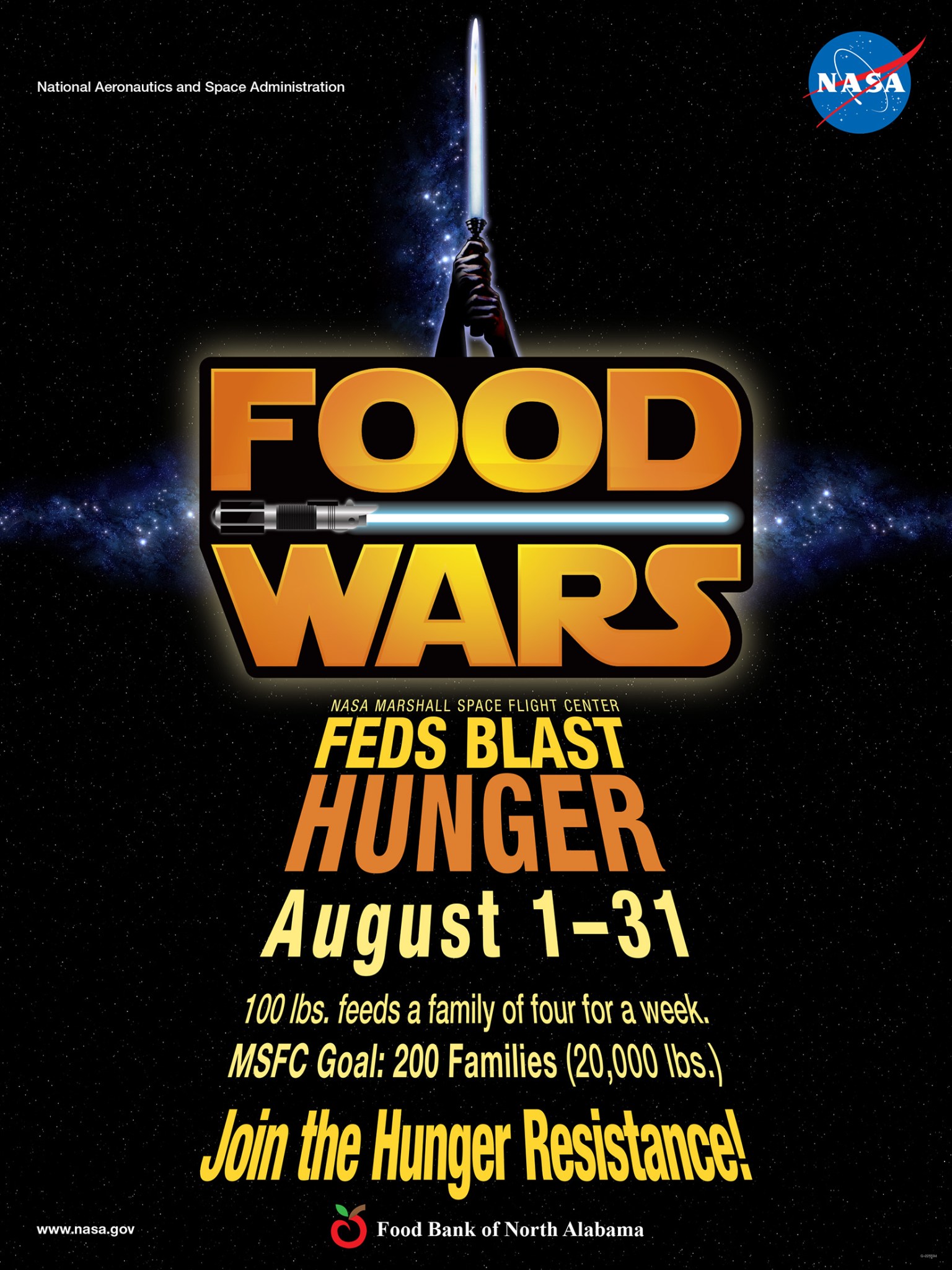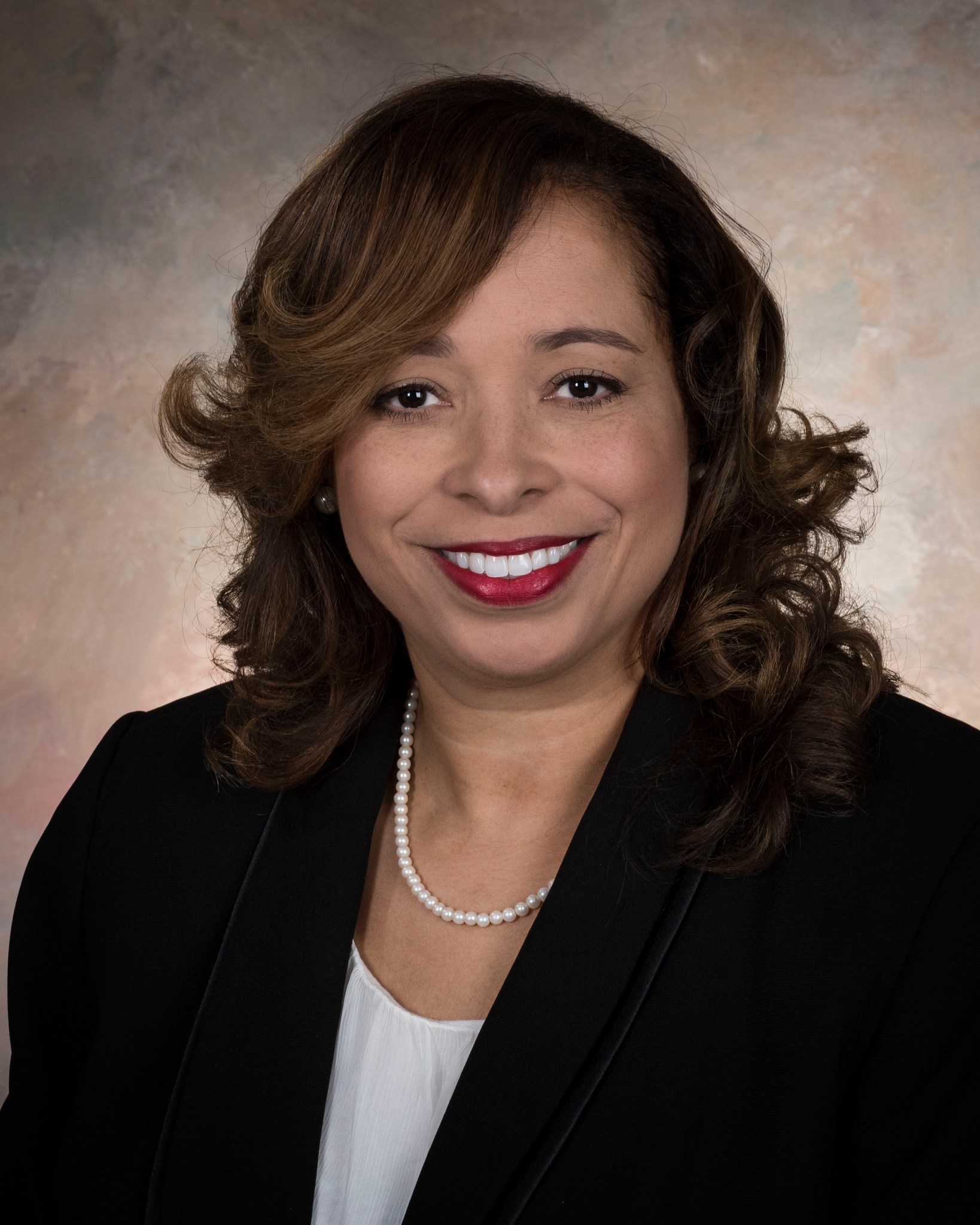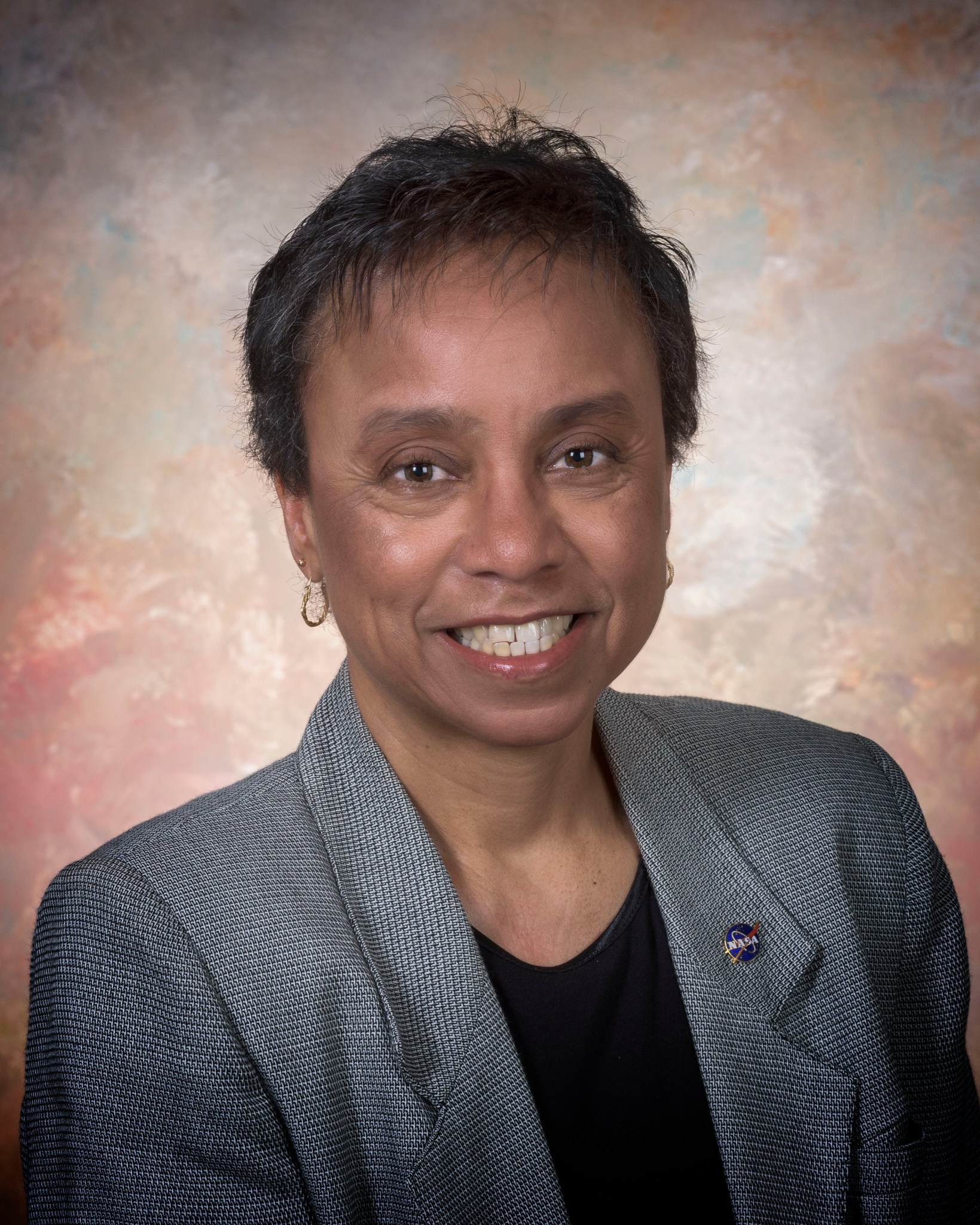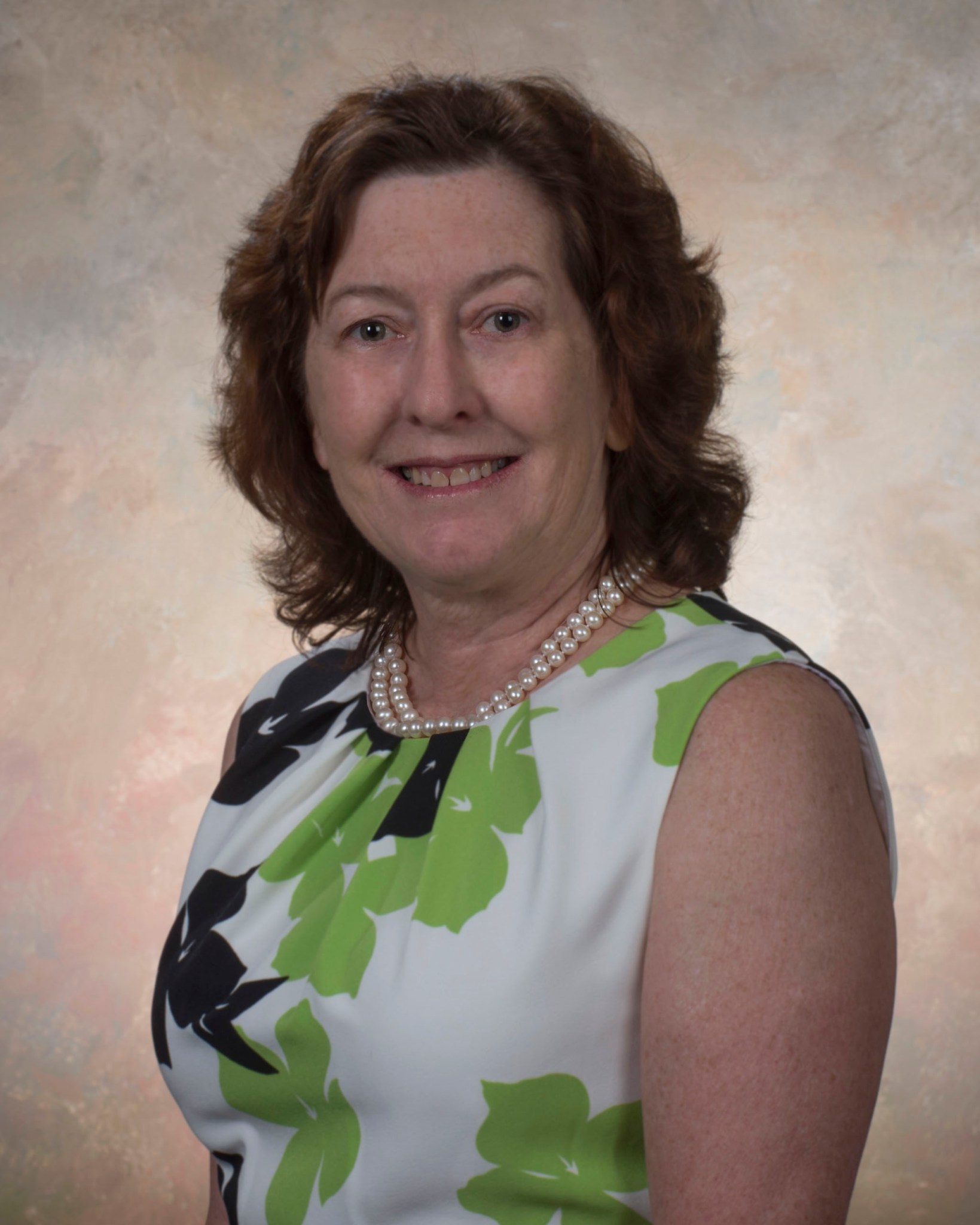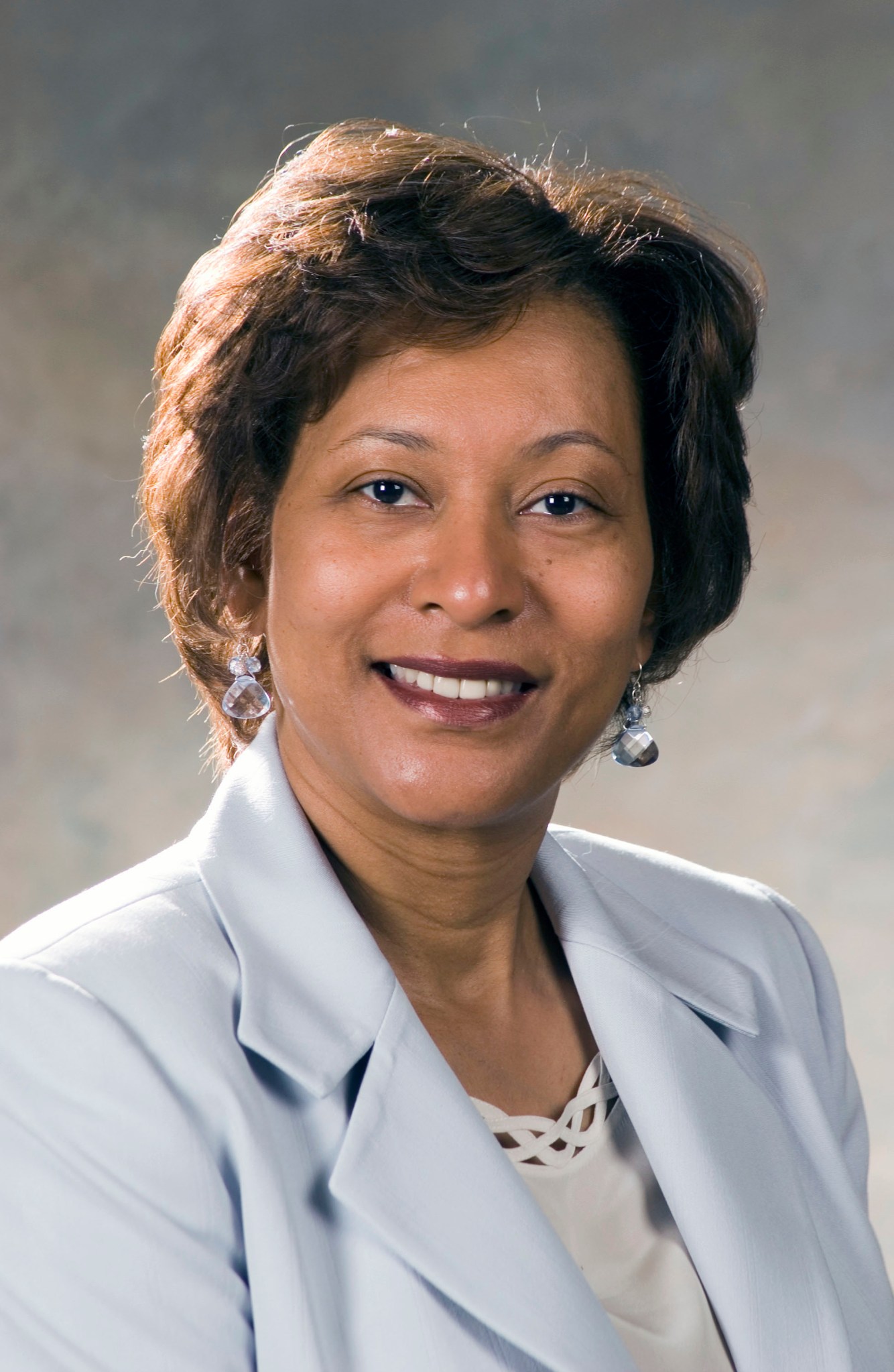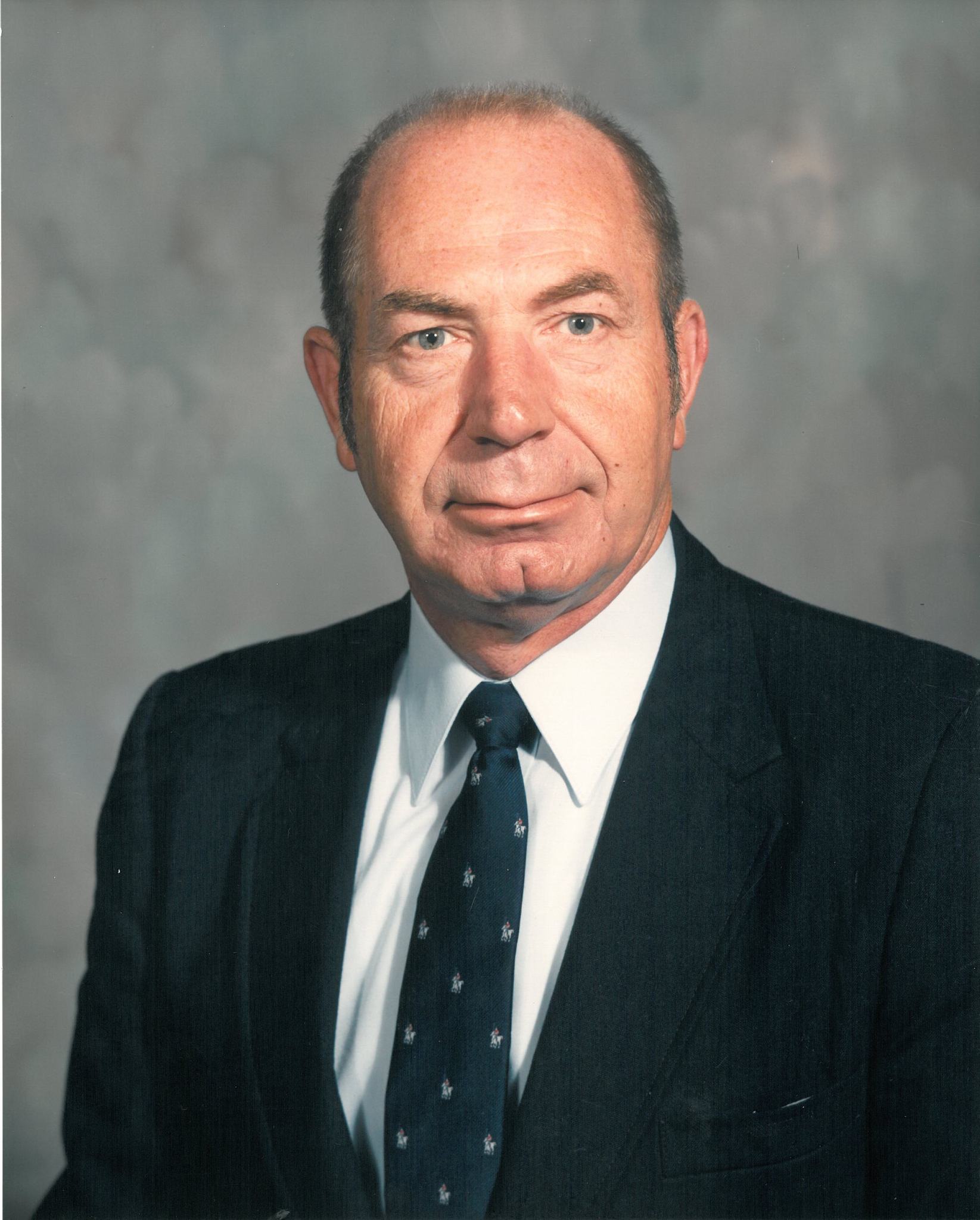In This Week’s Star
- Hundreds Get Behind-the-Scenes Look at NASA’s Journey to Mars
- Plugging Away Inside Massive SLS Fuel Tank: Welders Complete Final Plug Fusion Welds on SLS Liquid Hydrogen Tank
- Spacewalk May Double the Amount of Science on Space Station
- Join the Hunger Resistance: Feds Blast Hunger Campaign Underway at Marshall
- NASA Deputy Administrator Newman Inspires Marshall Team to Innovate, Collaborate for the Journey to Mars
- Four Marshall Civil Servants Receive Federal Women’s Program Awards
- Retired NASA Astronaut Owen Garriott Shares Reflections on Skylab and Spacelab Space Exploration
- MIT Professor Nergis Mavalvala Headlines Marshall’s LGBT Celebration
- This Week in NASA History: Saturn IB AS-202 Launches — Aug. 25, 1966
- Journey to Mars NASA Social Featured on ‘This Week @NASA’
- Former Marshall Associate Director Joseph ‘Woody’ Bethay Dies
- Obituaries
Hundreds Get Behind-the-Scenes Look at NASA’s Journey to Mars
By Megan Davidson
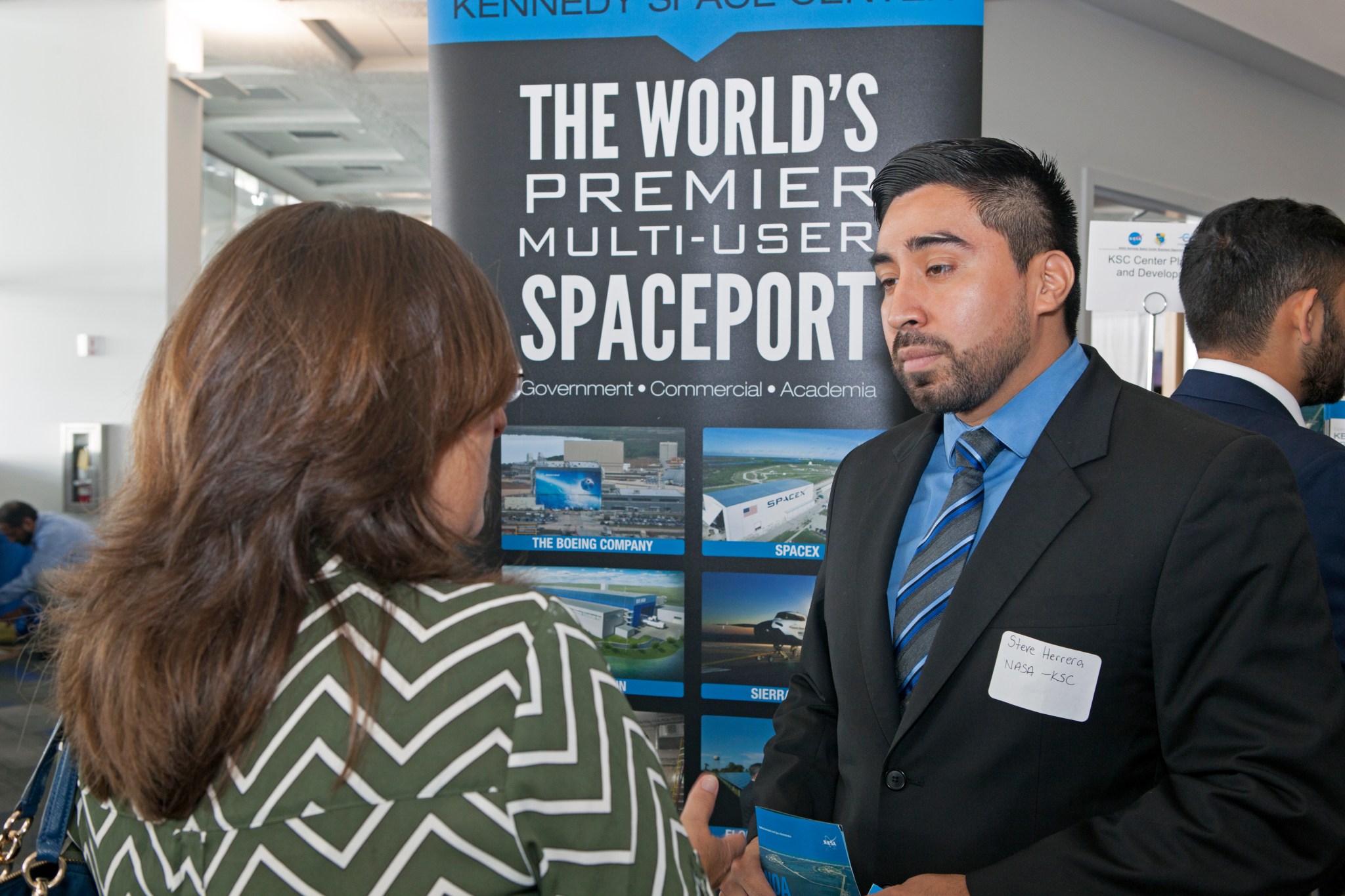
It was all Mars, all day Aug. 18 at NASA’s Michoud Assembly Facility and Stennis Space Center. Dubbed “NASA Mars Day,” the event gave hundreds of people, including members of the news media and 85 NASA Social participants, a behind-the-scenes look at progress on the agency’s journey to Mars. NASA Socials provide opportunities for social media followers to learn and share information about NASA’s missions, people and programs.
The event included tours of Michoud, where the core stage of NASA’s new rocket, the Space Launch System, and key components of the Orion spacecraft are in production. The SLS core stage, towering more than 200 feet tall, will store cryogenic liquid hydrogen and liquid oxygen that will feed the vehicle’s RS-25 engines. In 2018, SLS and Orion will launch together for the first time, and be capable of sending humans farther into space than ever before.
Social media participants also had the opportunity to ask questions and hear from NASA officials about numerous efforts being made now to enable human exploration on Mars. The panel for that discussion included Todd May, director of NASA’s Marshall Space Flight Center; Bill Hill, deputy associate administrator for the Exploration Systems Development at NASA Headquarters; Rick Davis, assistant director for Science and Exploration, Planetary Science Division at NASA Headquarters; John Vickers, principal technologist for the Space Technology Mission Directorate at Marshall; Katie Boggs, manager for Systems and Technology Demonstration at NASA Headquarters; and NASA astronaut Rick Mastracchio.
A tour of Stennis and a successful hot fire of the SLS RS-25 development engine on the A-1 test stand closed out the day. Four RS-25 engines, along with twin, five-segment solid rocket boosters, will power the SLS on missions to deep space.
The hashtag, #NASAMarsDay, trended throughout the day on social media channels. Marshall — which manages Michoud and the SLS Program — is a key facility in building and testing the world’s most powerful rocket, and in developing new technologies to advance the journey to Mars.
See more “NASA Mars Day” photos on Flickr.
Davidson, an ASRC Federal/Analytical Services employee, supports the Office of Strategic Analysis & Communications.
Plugging Away Inside Massive SLS Fuel Tank: Welders Complete Final Plug Fusion Welds on SLS Liquid Hydrogen Tank
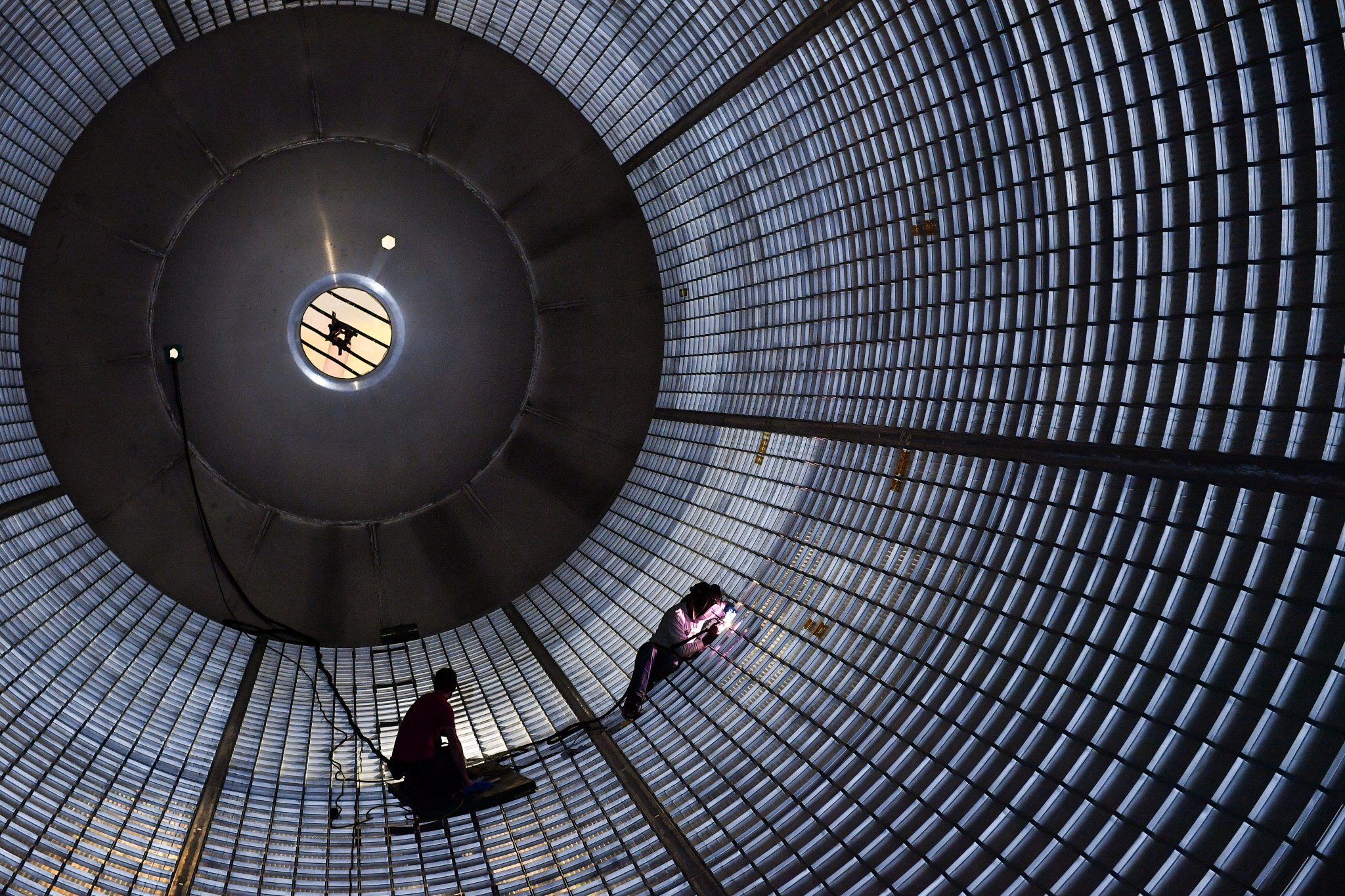
Welders inside a large liquid hydrogen tank for NASA’s Space Launch System at the Michoud Assembly Facility plug holes left after the tank was assembled. Using frictional heating and forging pressure, friction stir welding produces high-strength bonds virtually free of defects. The process transforms metals from a solid state into a “plastic-like” state and uses a rotating pin tool to soften, stir and forge a bond between two metal sections to form a uniform welded joint. At the beginning and end of each weld, holes remain where the rotating pin tool enters and exits the metal. Six 22-foot-tall barrels and two domed caps were joined together to create the qualification test article, which measures an astounding 27.5 feet in diameter and over 130 feet long. Qualification test articles closely replicate flight hardware and are built using identical processing procedures. The liquid hydrogen tank, a liquid oxygen tank, four RS-25 engines and other elements form SLS’s core stage, which also serves as the rocket’s structural backbone. SLS — the most powerful rocket in the world — along with NASA’s Orion spacecraft will send astronauts deeper into space than ever before, including on the agency’s journey to Mars. (NASA/Michoud/Steve Seipel)
Spacewalk May Double the Amount of Science on Space Station
By Bill Hubscher
By simply adding a new door, NASA astronauts may have doubled the amount of science and research that can be performed on the International Space Station.
NASA astronauts Jeff Williams and Kate Rubins conducted a six-hour spacewalk on the station Aug. 19 to attach the first of two new international docking adapters to the orbiting laboratory.
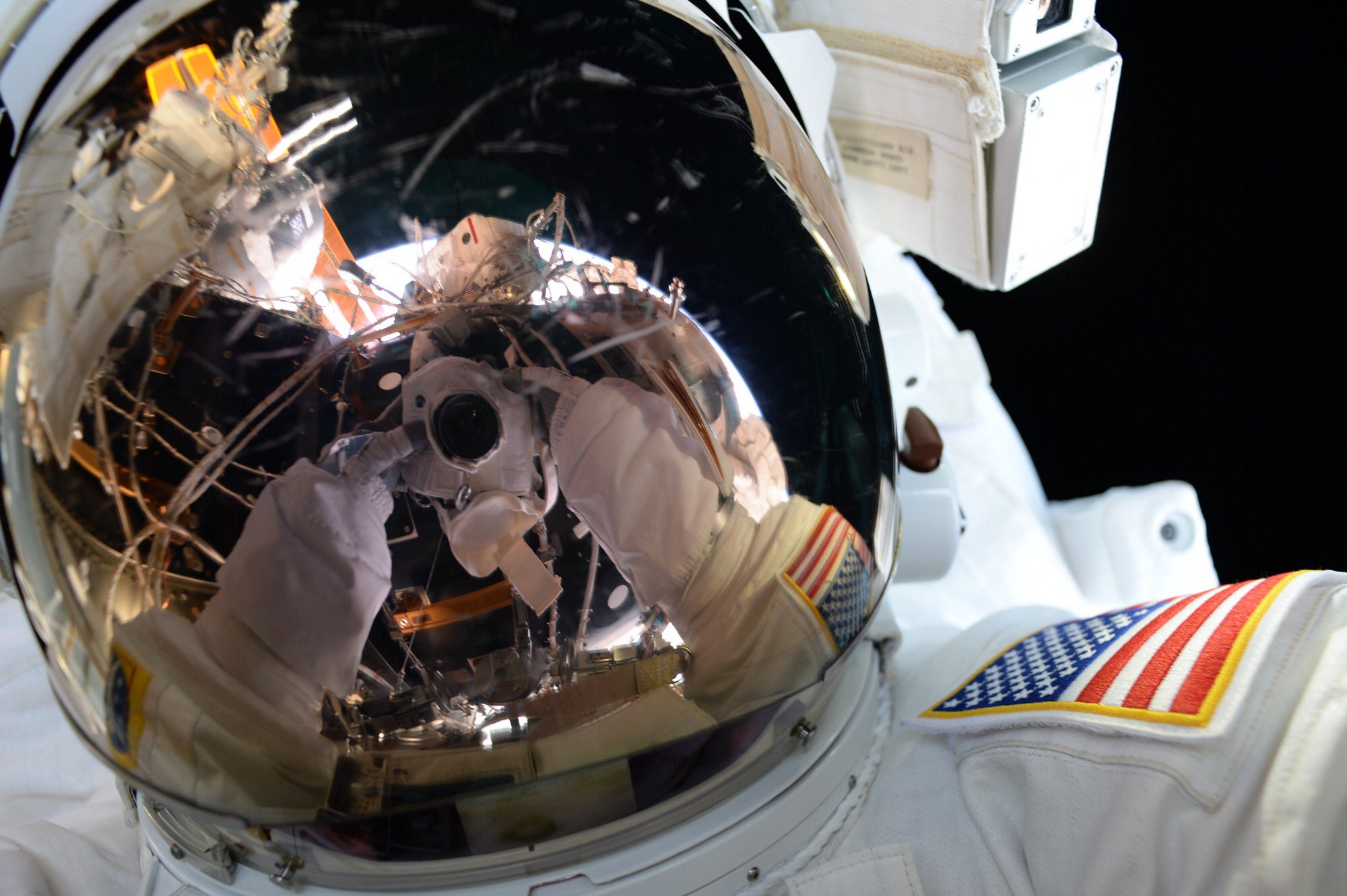
These adapters will be used on the future arrivals of human-rated spacecraft being built by NASA’s commercial partners. Launches of capsules built by The Boeing Co., of Chicago, and SpaceX, of Hawthorne, California, from NASA’s Kennedy Space Center will restore America’s human launch capability to the space station.
Launching from American soil also will increase the amount of time space station crews can dedicate to scientific research by allowing for an additional crew member on the space station, bringing the compliment of astronauts on board to seven.
That additional crew member will mean a significant change for the Payload Operations Integration Center — mission control for science activities on the space station — located at NASA’s Marshall Space Flight Center.
“The new crew member could essentially double the amount of science and research utilization on the space station,” said Chris Cianciola, manager for payload operations and integration at Marshall. “All that extra science will need more support by our flight controllers. We are still determining how we will expand our team of experts working with astronauts and scientists, but increasing the discoveries we can make in orbit by such magnitude is an exciting prospect.”
These discoveries not only benefit people on Earth, but also help prepare astronauts for deep space missions, including the journey to Mars.
Space station crew members have now conducted 194 spacewalks in support of assembly and maintenance of the orbiting laboratory — a total of 1,210 hours and 46 minutes working outside the station. The excursion was the fourth spacewalk for Williams and the first for Rubins.
For more information on the International Space Station crews and research, click here.
Hubscher, an ASRC Federal/Analytical Services employee, supports the Office of Strategic Analysis & Communications.
Join the Hunger Resistance: Feds Blast Hunger Campaign Underway at Marshall
By Brian C. Massey
NASA’s Marshall Space Flight Center has joined the resistance for this year’s Feds Blast Hunger campaign. With only seven days remaining in this year’s campaign, Marshall team members are encouraged to help make a final push to reach the 20,000-pound goal to help local families in need.
“With the end of our Feds Feed Families campaign just a week away, I want to encourage everyone to consider participating,” said Joe Drieling, lead for Marshall’s Feds Blast Hunger. “The North Alabama Food Bank receives our donations and distributes the food to soup kitchens, church pantries, backpack programs and other agencies and groups that make great efforts to get food to those who truly have needs in North Alabama.”
It is estimated that it takes 100 pounds each week to feed a family of four. So far this year, Marshall team members have collected 4,566 pounds of food — enough to feed 45 families in need.
“Hunger does exist in our community, many of whom are making decisions between needed medical care or food,” said Drieling. “A small donation of just five canned goods from each person would help us surpass our goal.”
Marshall organizations are divided into nine Star Wars-themed teams that will compete for center-wide bragging rights. Team Poe Dameron — which consists of the Materials and Processes Laboratory and the Missions Operations Laboratory — currently leads with 1,609 pounds donated.
Donation bins are located around the center, and team members are encouraged to mark their donations with labels for their respective teams. Suggested items for donation include peanut butter, canned fruits, tuna, beans, rice, macaroni and cheese, chili, canned stews, canned soups, canned meats, canned vegetables and pop-top items.
Contributions from this year’s campaign will benefit the Food Bank of North Alabama, which serves 11 counties in North Alabama that include the cities of Huntsville, Madison and Decatur, and many smaller, rural areas. In 2010, 140,228 people in the 8,011-square-mile service area lived at or below the poverty level.
Feds Fight Hunger is part of the federal Feds Feed Families campaign, which collected more than 14.8 million pounds of non-perishable food items last year. Launched in 2009 as part of the United We Serve campaign, Feds Feed Families has collected nearly 39 million pounds of food for those in need.
For more information, visit the Feds Feed Families home page of the Feds Fight Hunger ExplorNet page.
Massey, an ASRC Federal/Analytical Services employee and the Marshall Star editor, supports the Office of Strategic Analysis & Communications.
NASA Deputy Administrator Newman Inspires Marshall Team to Innovate, Collaborate for the Journey to Mars
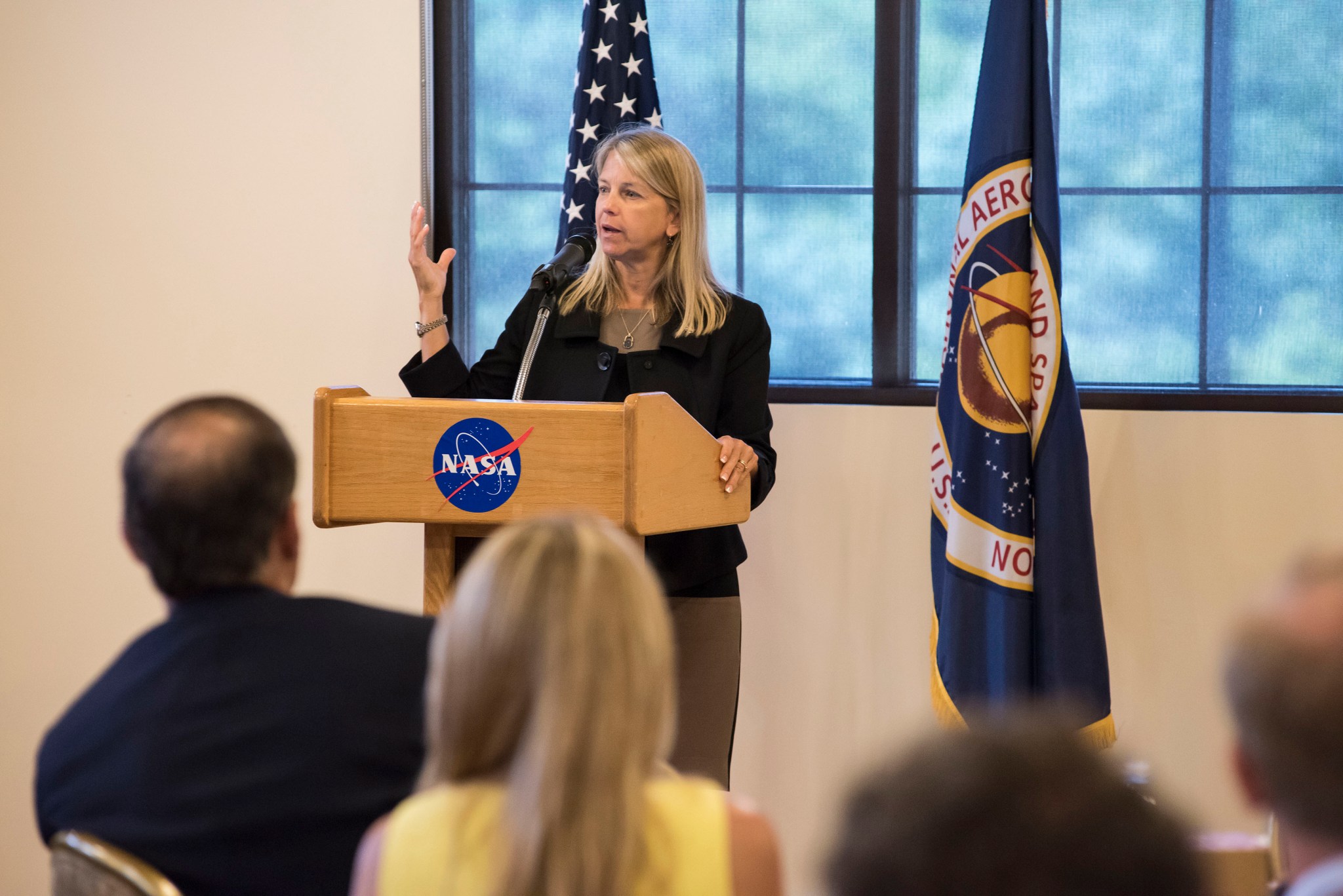
NASA Deputy Administrator Dava Newman updated a Marshall Association luncheon crowd at the Redstone Overlook Aug. 16 about technology being developed across the agency that is driving exploration. “So many things are happening across NASA and here at Marshall on the journey to Mars,” said Newman. “Continuous innovation, within government and with industry, pushes along the new technologies and the transformative organizations needed to get us to Mars.” The Marshall Association — a professional, employee service organization, which includes Marshall team members and retirees — offers opportunities to network and share ideas with colleagues and members of the Marshall community. For more information about the Marshall Association, click here. (NASA/MSFC/Fred Deaton)
Four Marshall Civil Servants Receive Federal Women’s Program Awards
Four NASA Marshall Space Flight Center team members have been honored with Federal Women’s Program Outstanding Achievement Awards for exceptional service to Marshall and the U.S. space program.
Presented annually by Marshall’s Office of Diversity and Equal Opportunity Federal Women’s Program, the awards recognize outstanding federal employees in professional, administrative, supervisory and clerical positions. The awards commemorate Women’s Equality Day, designated by Congress in 1971 to honor the 1920 certification of the 19th Amendment to the U.S. Constitution, which granted women the right to vote. Women’s Equality Day is Aug. 26.
Award recipients include Roslin Hicks, group lead for the Planning and Facilities Utilization Office in the Office of Center Operations, and Lorna Jackson, Avionics Systems Integration Branch chief within the Engineering Directorate’s Space Systems Department, both for supervisory achievement; Donna Leach, coordinator for sustainability, Environmental Management System and Regulatory Risk Analysis and Communications for Marshall, for professional achievement; and Diedra Williams, education program specialist for academic affairs in the Office of Human Capital, for administrative achievement.
Roslin Hicks
Hicks has led the Planning and Facilities Utilization Office since 2008. She oversees infrastructure management and updates as part of Marshall’s 20-year master plan. She also manages cultural and historical resources in keeping with the National Historic Preservation Act, coordinates with the U.S. Army garrison on Redstone and supervises Marshall lease agreements and other property management duties.
A native of Greensboro, North Carolina, Hicks earned a bachelor’s degree in mechanical engineering in 1989 from North Carolina Agricultural & Technical State University in Greensboro. She began her NASA career in 1987 as a Marshall cooperative education student, testing batteries for the Hubble Space Telescope, before joining Marshall full-time in 1990. Among her various leadership roles, she was special assistant to Marshall Center Director Art Stephenson in 2001-2002.
Lorna Jackson
As branch chief of the Avionics Systems Integration Branch, Jackson oversees the team responsible for integration of the on-board avionics system for NASA’s Space Launch System, the nation’s next heavy-lift launch vehicle, set to loft new human exploration missions to Mars and elsewhere in the solar system.
An Everett, Massachusetts, native, Jackson earned a bachelor’s degree in electrical engineering in 1982 from the Georgia Institute of Technology in Atlanta. She began her NASA career at Marshall in 1986 as an electrical engineer designing, developing and testing electrical power systems for Hubble and the Chandra X-ray Observatory. She assumed her current role in 2007.
Donna Leach
Leach is coordinator of the Environmental Management System at Marshall, the center’s sustainability program and Regulatory Risk Analysis and Communication for Marshall, communicating regulatory issues to the Marshall community.
A native of Old Forge, New York, Leach received a bachelor’s degree in mechanical and aerospace engineering in 1994 from the University of Alabama in Huntsville. She earned a master’s degree in environmental engineering there in 2001. She began her NASA career at Marshall in 1993 as a mechanical engineering cooperative education student supporting the NASA Small Expendable Deployer System tether missions and the International Space Station Robotic Arm. She served as cultural resource manager for Marshall, NASA’s Michoud Assembly Facility and the Santa Susana Field Laboratory in Simi Valley, California, from 1997-2010, preserving their archaeological resources.
Diedra Williams
As a NASA education program specialist, Williams’ primary focus is planning and organizing the NASA Human Exploration Rover Challenge, which challenges high school, college and university students to build and race vehicles of their own design. Each spring, the race draws teams from around the globe to the U.S. Space & Rocket Center in Huntsville.
A native of Washington, she earned a bachelor’s degree in business administration from Mount Vernon College in Washington in 1981 and a master’s degree in public affairs from the American University in Washington in 1983. Williams joined the NASA Goddard Space Flight Center’s Office of Human Capital in 1998 where she was an operations analyst. In 2000, she became Marshall’s executive resources program manager in the Office of Human Capital. Since 2009, she has worked in the Academic Affairs Office where she also reviews and edits all content posted to the NASA Education web portal.
Retired NASA Astronaut Owen Garriott Shares Reflections on Skylab and Spacelab Space Exploration
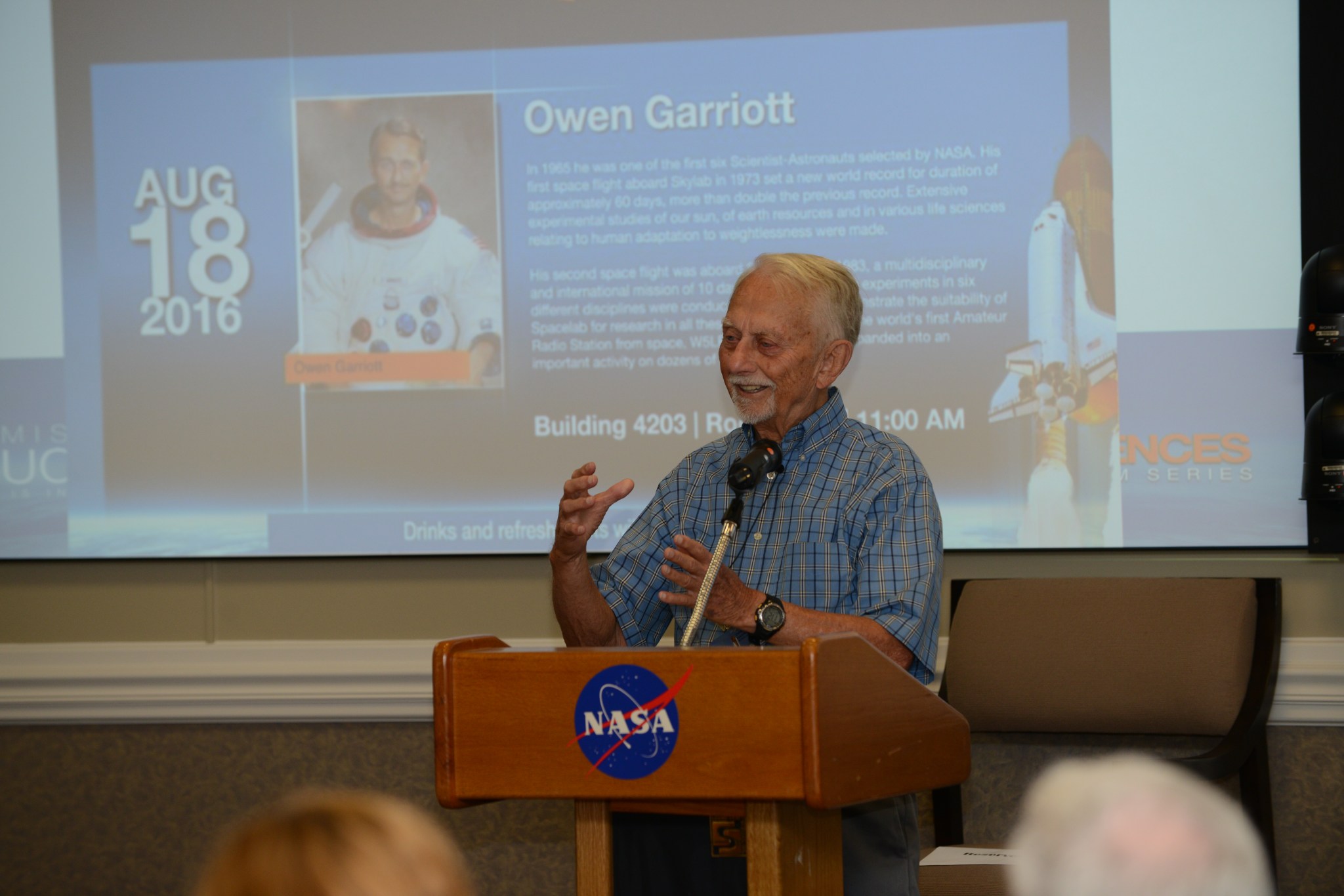
Retired NASA astronaut Owen Garriott, who conducted groundbreaking Skylab and Spacelab science missions in the 1970s and 1980s, addresses the Shared Experiences forum Aug. 18 at NASA’s Marshall Space Flight Center. Garriott, one of NASA’s first designated scientist-astronauts, conducted research aboard Skylab, America’s first orbiting space station, during the Skylab 3 mission in 1973. He then flew on space shuttle Columbia a decade later during STS-9, conducting experiments for the Spacelab-1 mission in 1983. During the Shared Experiences forum, he acknowledged colleagues — many in attendance — with whom he worked for more than four decades, advancing NASA’s efforts to make long-duration human stays in space safer, more comfortable and more rewarding. Selected as an astronaut in 1965, Garriott retired from NASA in 1986. The Mission Success is in Our Hands series, cosponsored by Jacobs Engineering of Huntsville, is part of a Marshall safety initiative to promote and strengthen mission assurance and flight safety. (NASA/MSFC/Michael Purvey)
MIT Professor Nergis Mavalvala Headlines Marshall’s LGBT Celebration
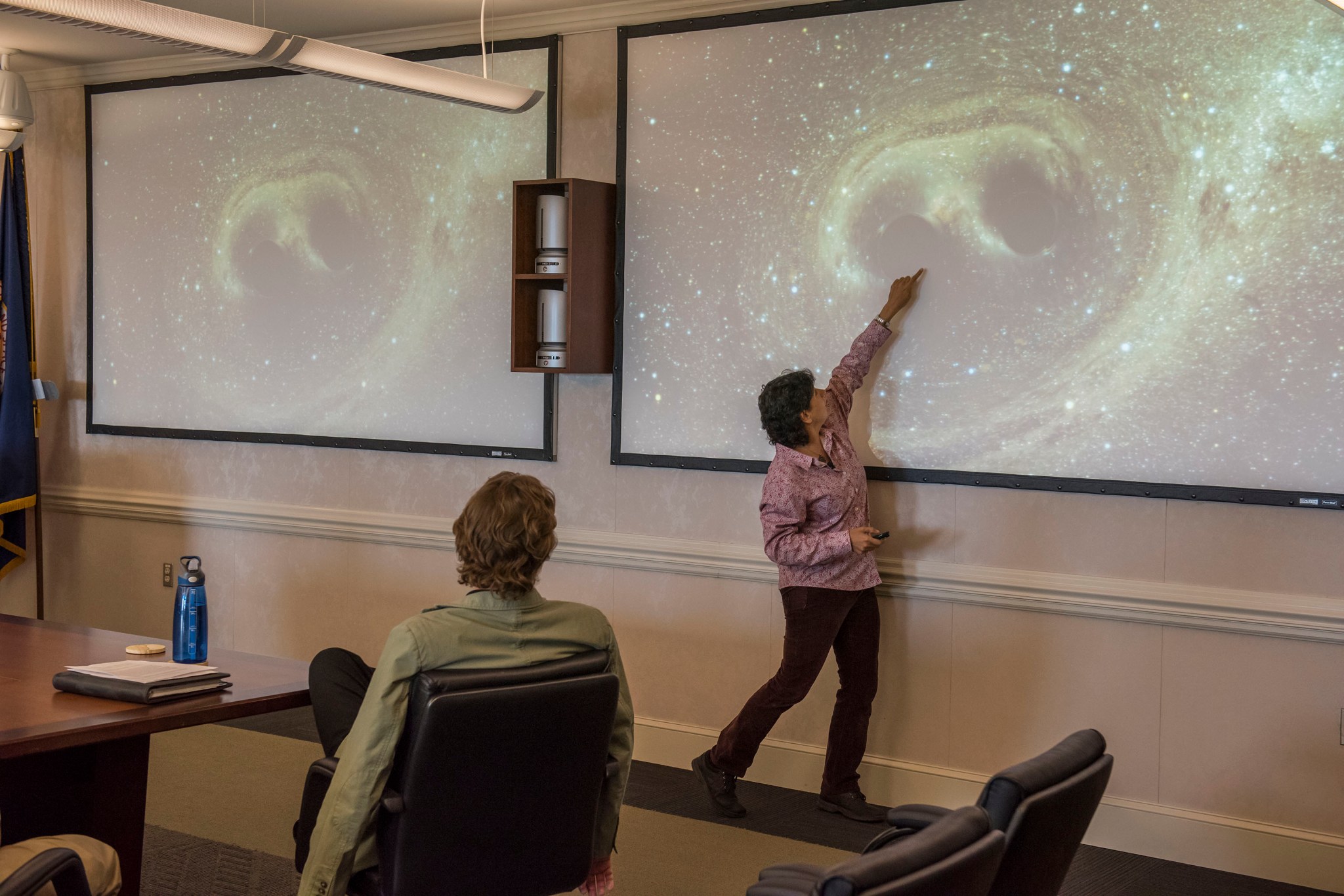
Nergis Mavalvala, the associate head of the Department of Physics at the Massachusetts Institute of Technology, in Cambridge, speaks Aug. 18 at NASA Marshall Space Flight Center’s Lesbian, Gay, Bisexual and Transgender Special Emphasis Program celebration. Mavalvala, a self-described “out, queer person of color,” explained her research that helped lead to the first observation of Albert Einstein’s hypothesized gravitational waves. Marshall’s LGBT Special Emphasis Program celebration is sponsored by the Office of Diversity and Equal Opportunity, which strives to promote diversity, equality and inclusion for all individuals, while providing a workplace that is free from discrimination, including harassment and retaliation. (NASA/MSFC)
This Week in NASA History: Saturn IB AS-202 Launches — Aug. 25, 1966
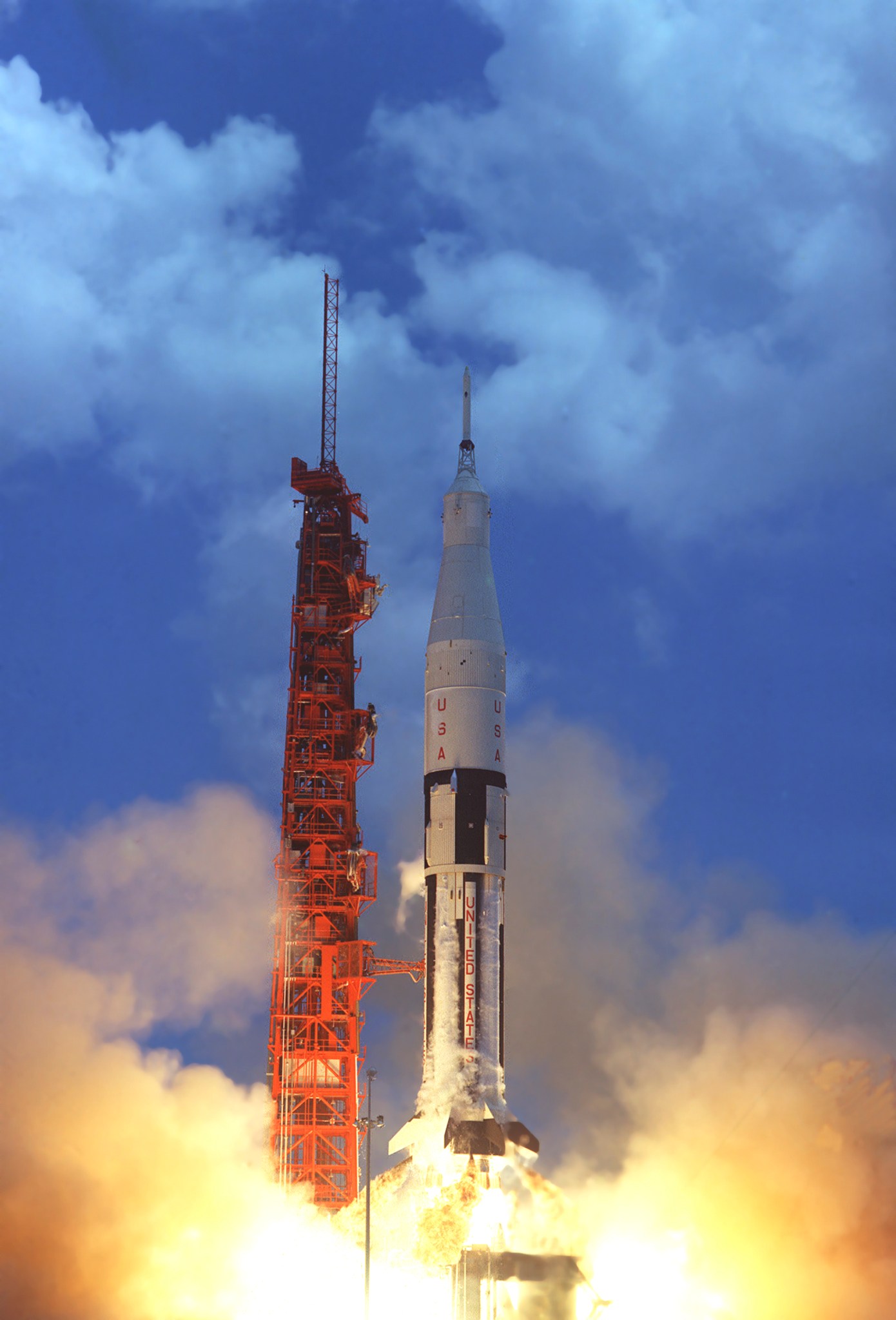
This week in 1966, AS-202 lifted off from NASA’s Kennedy Space Center. The Saturn IB primary mission objectives included the confirmation of projected launch loads, demonstration of spacecraft component separation and verification of heat shield adequacy at high reentry rates. NASA’s Marshall Space Flight Center managed the Saturn program for NASA and worked with companies across America to build the launch vehicles. The NASA History Program is responsible for generating, disseminating, and preserving NASA’s remarkable history and providing a comprehensive understanding of the institutional, cultural, social, political, economic, technological, and scientific aspects of NASA’s activities in aeronautics and space. For more pictures like this one and to connect to NASA’s history, visit the History Program’s webpage. (NASA)
Journey to Mars NASA Social Featured on ‘This Week @NASA’
A NASA Social held Aug. 18 at NASA’s Michoud Assembly Facility and Stennis Space Center is featured in the latest edition of “This Week @NASA,” a weekly video program broadcast nationwide on NASA-TV and posted online.
The NASA Social event provided an opportunity for social and traditional media to see the progress NASA is making on the journey to Mars and included exhibits of the agency’s robotic scientific exploration of the Red Planet. Participants toured Michoud’s manufacturing facilities — where construction is underway on the core stage for NASA’s Space Launch System — and viewed a test firing of one of SLS’s RS-25 rocket engines at Stennis. NASA’s Marshall Space Flight Center manages Michoud and SLS — which will be the world’s most powerful rocket, and launch astronauts in the agency’s Orion spacecraft on deep space missions, including to an asteroid and eventually to Mars.
View this and previous episodes at “This Week @NASA” or at https://www.youtube.com/user/NASAtelevision.
Former Marshall Associate Director Joseph ‘Woody’ Bethay Dies
Joseph “Woody” Bethay, 82, of Huntsville, former associate director of NASA’s Marshall Space Flight Center, died Aug. 22. Named associate director in 1990, he retired in 1995 after 35 years with NASA.
The Mississippi native earned his bachelor’s degree in mechanical engineering from Mississippi State University in Starkville, in 1952. He began his professional career as an engineer with the International Paper Co. in Mobile, Alabama, before becoming a project engineer in the U.S. Army’s missile research and development program at Redstone Arsenal in 1957. He joined NASA and Marshall when the American space agency was founded in 1960.
At Marshall, Bethay served in positions of increasing technical and managerial responsibility, including chief of Marshall’s Technical Programs Office, chief of Marshall’s Program Planning and Resources Office, director of Marshall’s Center Plans and Resources Control Office, director of Marshall’s Executive Staff and assistant to the center director.
During his NASA career, Bethay received two NASA Medals for Exceptional Service and the Presidential Rank of Meritorious Executive.
He is survived by his wife, Mackie Bethay.
Obituaries
Stephen D. Rose, 76, of Athens, Alabama, died Aug. 17. He retired from the Marshall Center in 2004 as an aerospace engineer. He is survived by his wife, Barbara Rose.
Charles L. Adams Sr., 85, of Huntsville, died Aug. 22. He retired from the Marshall Center in 1985 as an aerospace engineer. He is survived by his wife, Bettye Jane Tullington Adams.

